Handy Notebook From Scratch!
by Simrengarg in Craft > Books & Journals
17793 Views, 167 Favorites, 0 Comments
Handy Notebook From Scratch!
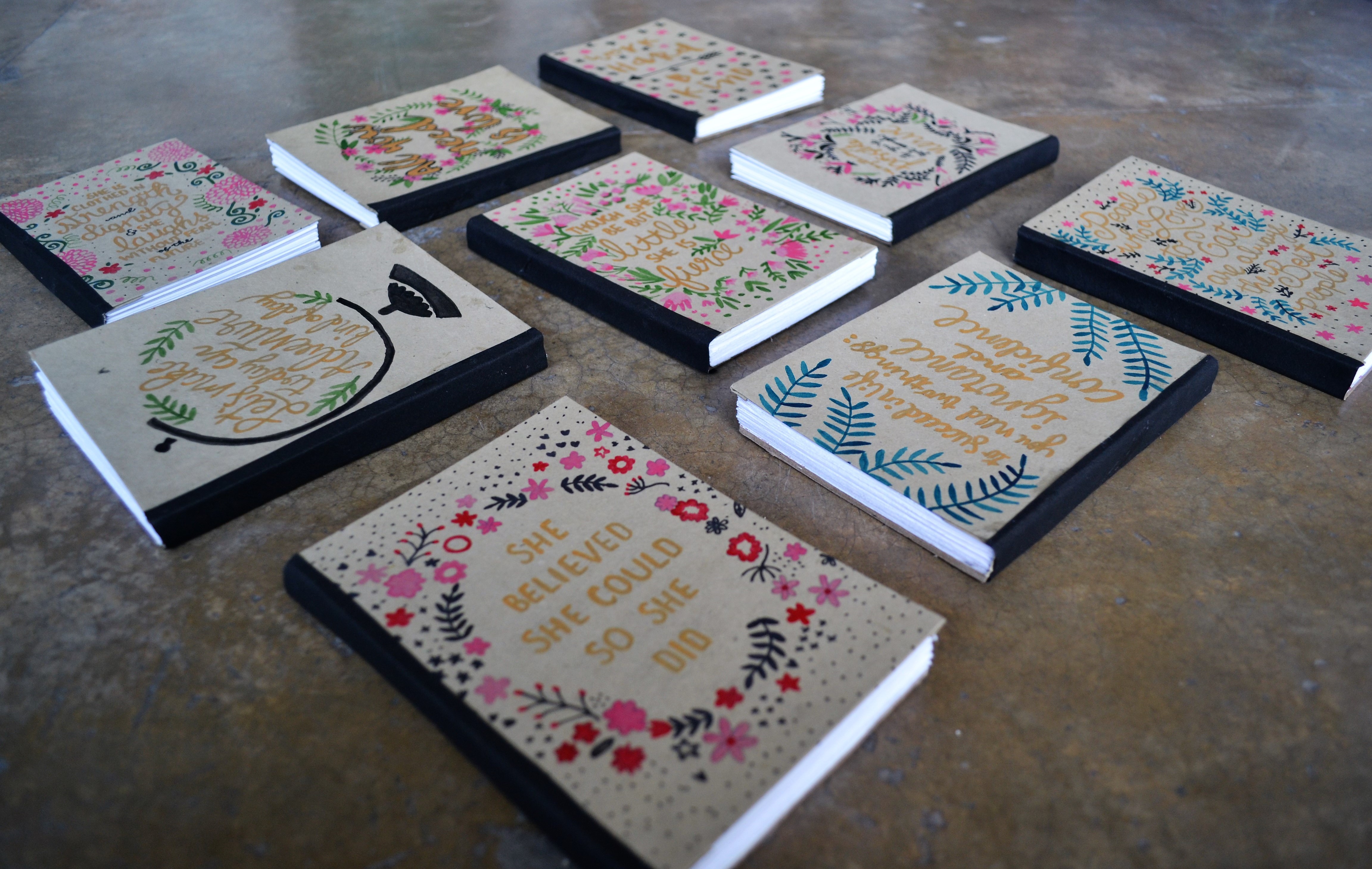
I have been book binding for some time now.
I love the artistic freedom you get when you make a notebook of your own. You can select what kind of paper you want, what cover you like, what size it should be. I believe that anyone who loves stationery, should try their hand at book binding.
In this instructable, I am creating a cute A6 size notebook, that is perfect to carry around on the go.
I focus more on the book binding part of things than cover making, because frankly I think they aren't all that. But still if you would like a tutorial on how I made them, do let me know!
I used Kettle stitch binding for this notebook. This bind allows the book to open completely whilst writing, which is important when making such a small notebook (you need room to write!).
So lets get started!
You Will Need
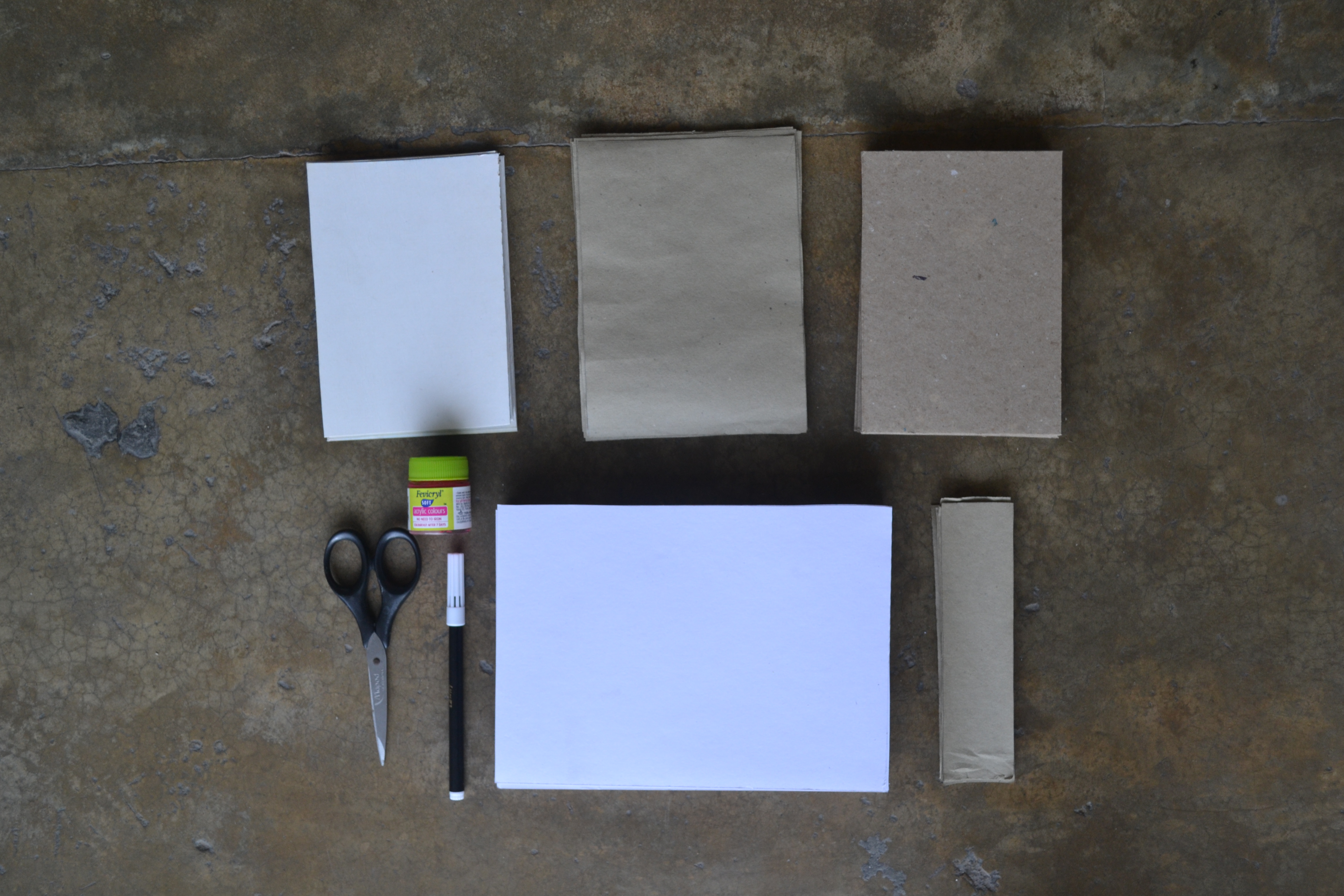
So, I had a very different idea in my head when I took this what you will need photo, so some items are missing. Below is a list of everything you will need:
- A5 size plain paper
- A6 size hard cardboard
- A6 size soft cardboard
- Brown paper that is larger than A6 (so that you have some extra paper to wrap around the front)
- Some extra brown paper to make the spine
- Black paper to cover the spine
- Scissors
- Acrylic paints (I used Fuschia, Antique Gold, Sap Green and Turquoise Green)
- Black marker pen
- Regular sewing thread to bind
- A bendable needle
- An awl, if you have one (other wise you could use the pointy end of a seam ripper like I did)
- A bone folder, but you could use anything (I used a small calculator, very random I know)
- Craft glue (I used PVA)
Prep Your Signature
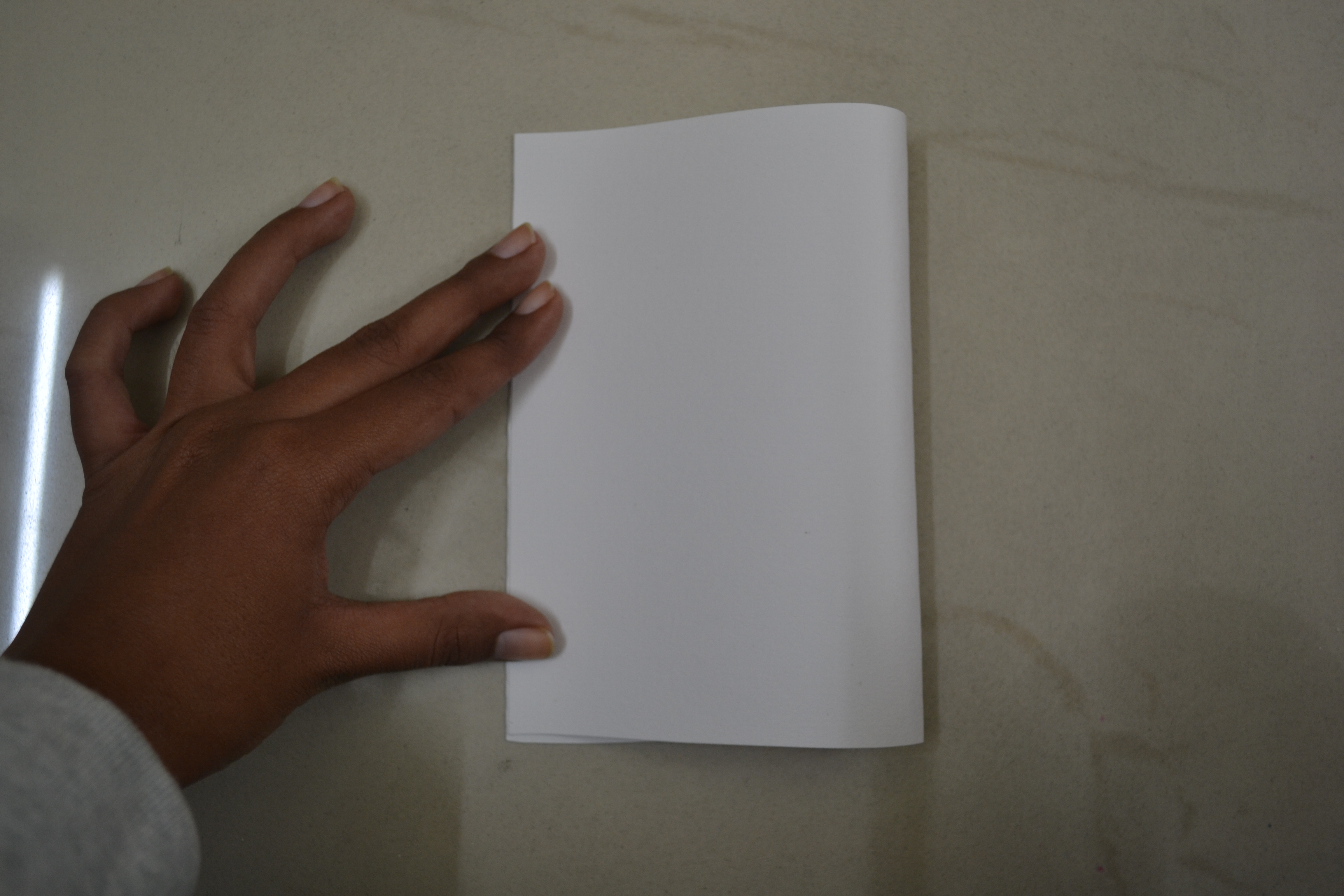
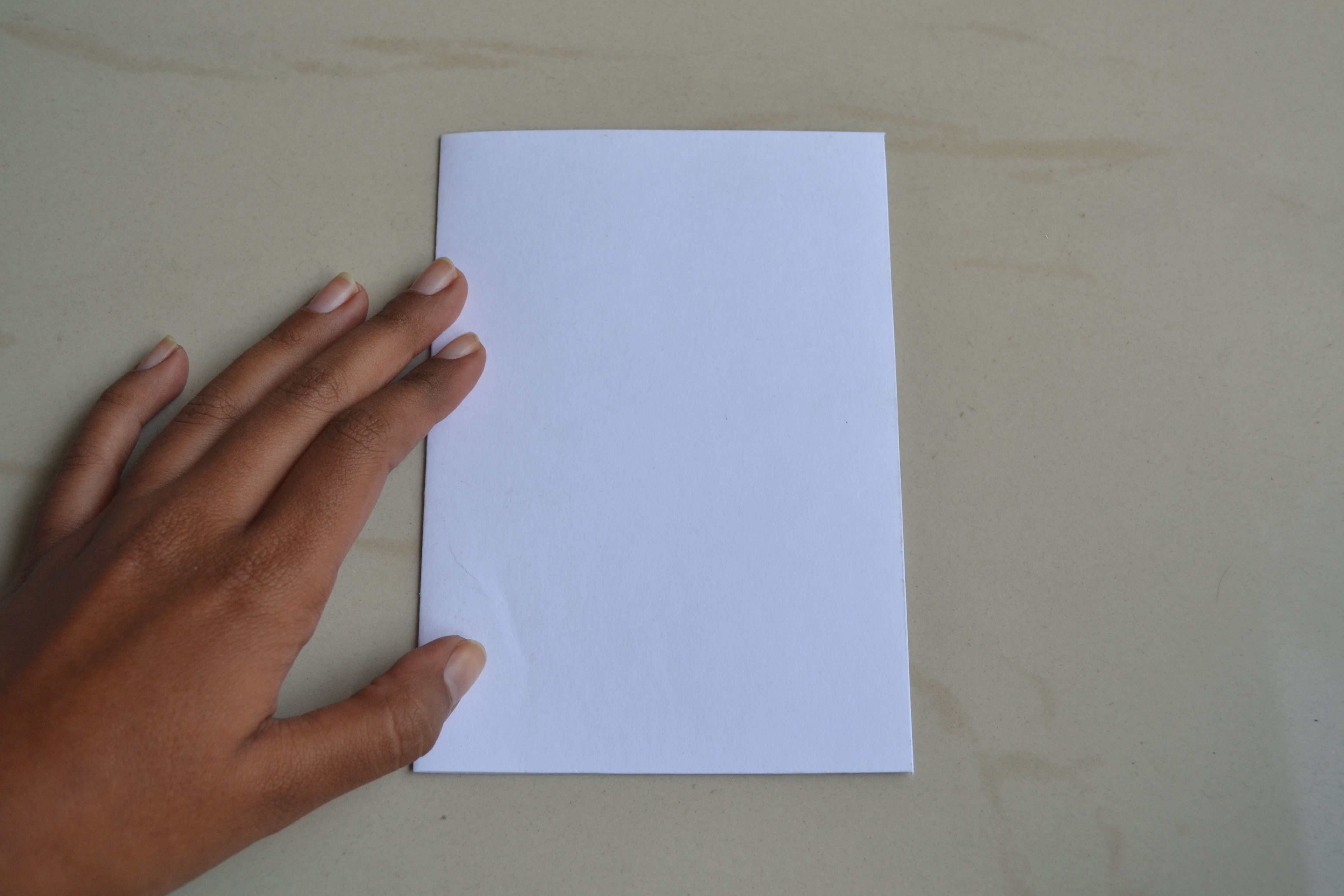
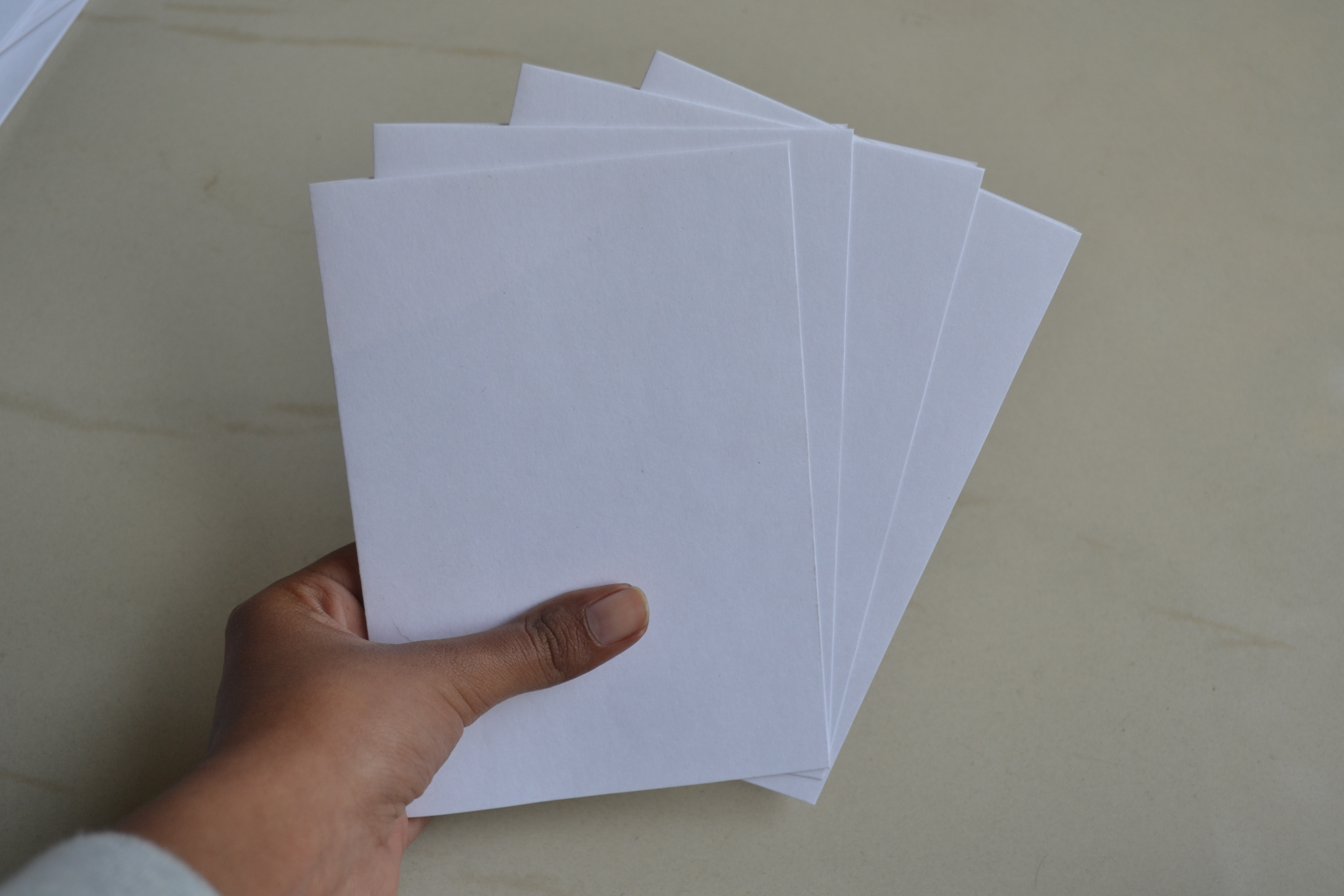
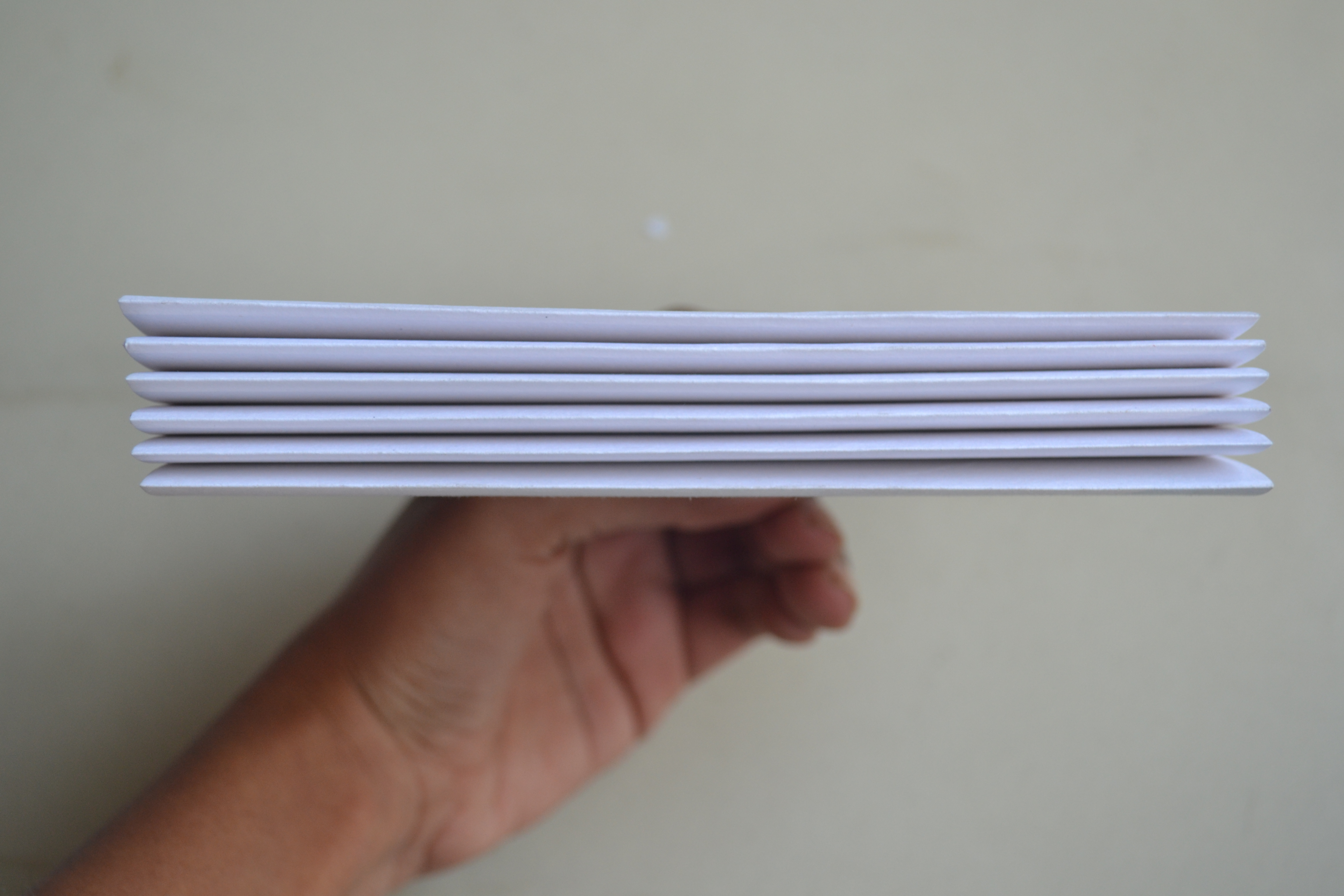
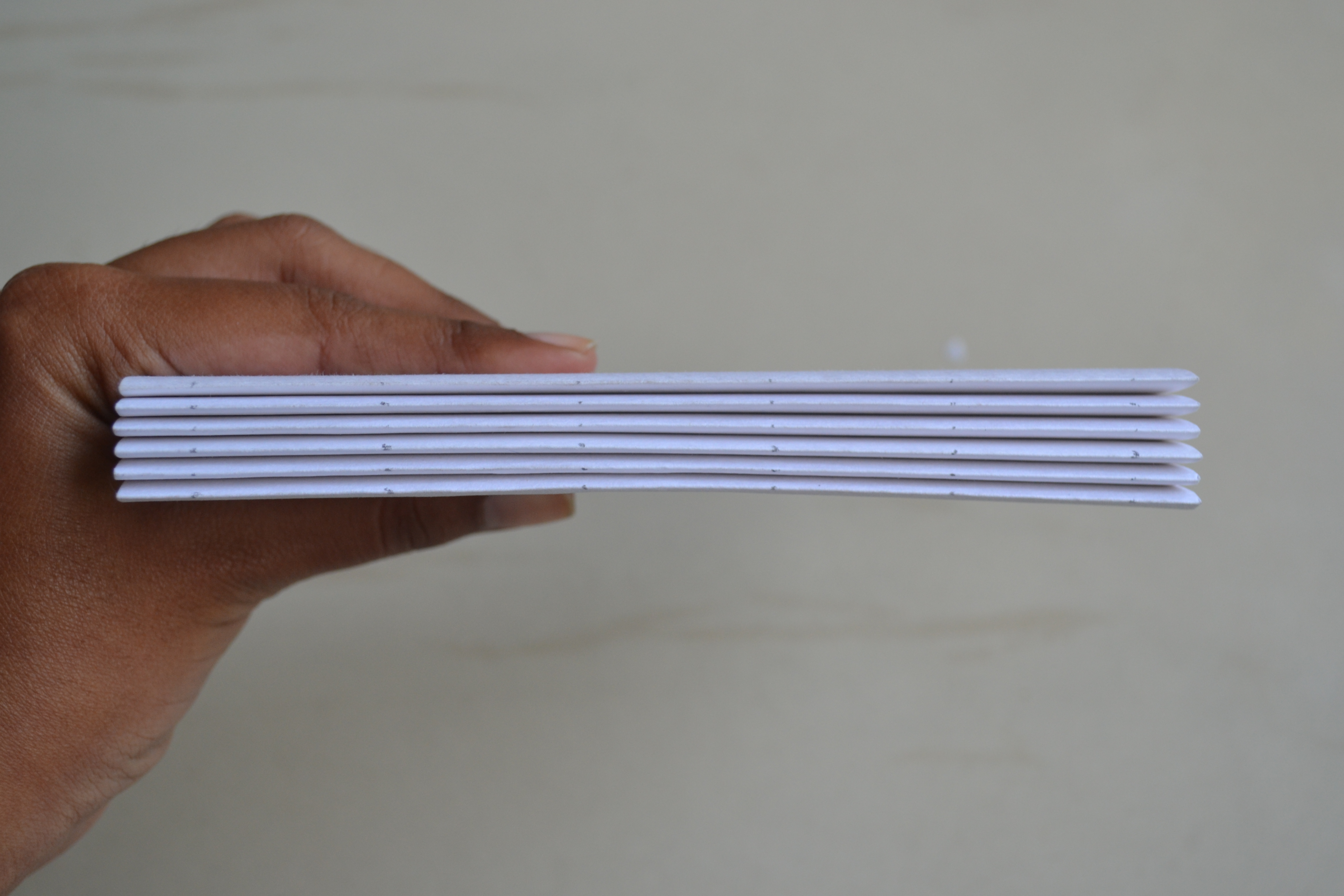
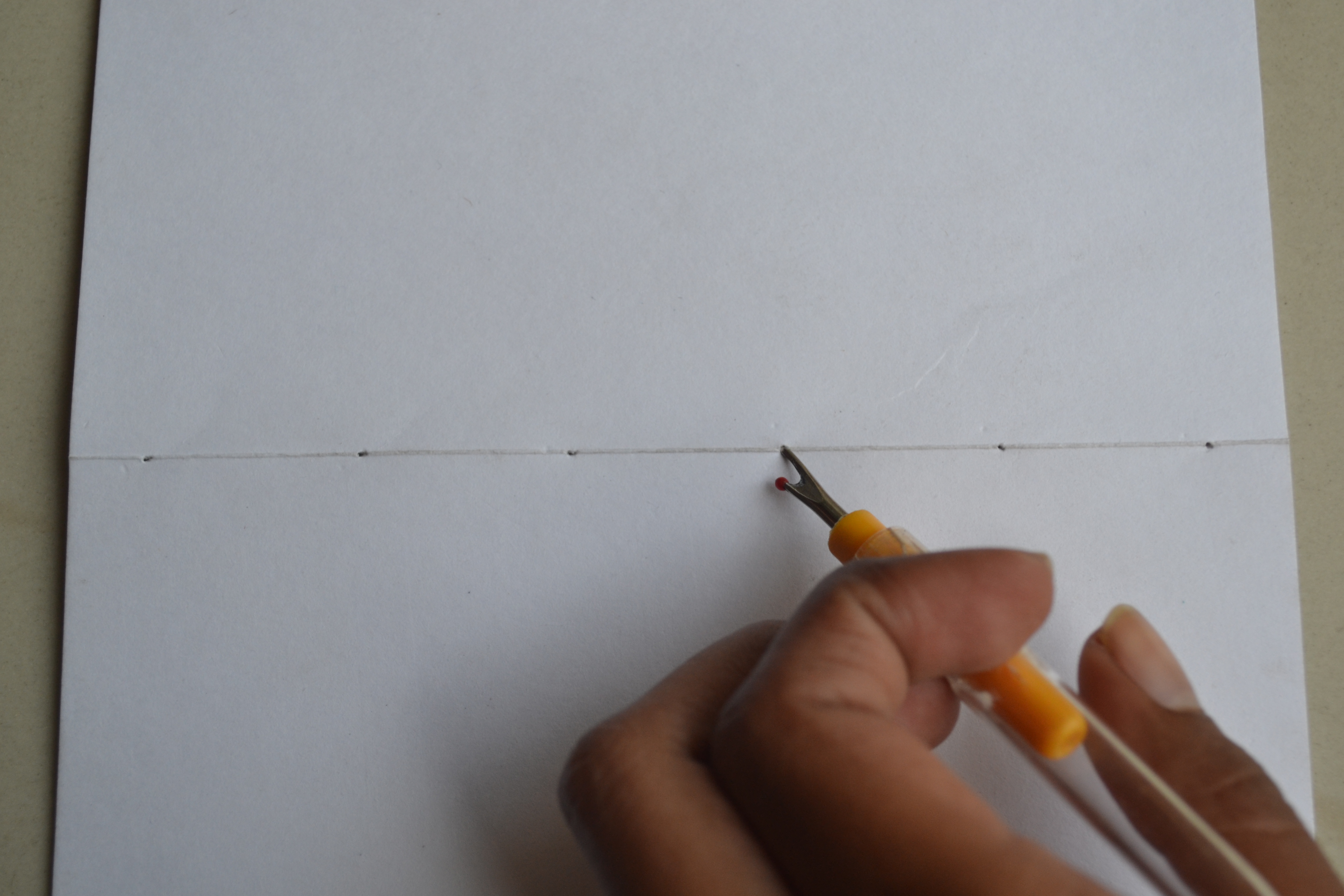
If you are new to book binding, a signature is four folded papers placed one inside the other.
Start out by folding your A5 sized plain paper into half. Make sure the ends align and you press down firmly (using a bone folder) along the fold. The neater you do this, the better will be your end product. So spend time doing this properly.
After all your pages are folded, make as many signatures as you like. Once all your signatures are made, press down along the fold.
Once all your signatures are ready to go, place them as thick you want your notebook to be. As you can see I used 6 signatures to make mine (but later I changed my mind and used only 5 per notebook). Align these signatures so that all the ends meet.
Now make 6 marks, each an inch apart where you would poke your holes. Be very accurate while making these marks, so that you don't end up with a wonky notebook. Then poke holes using an awl (but i used a seam ripper).
Binding Part 1: the First Signature
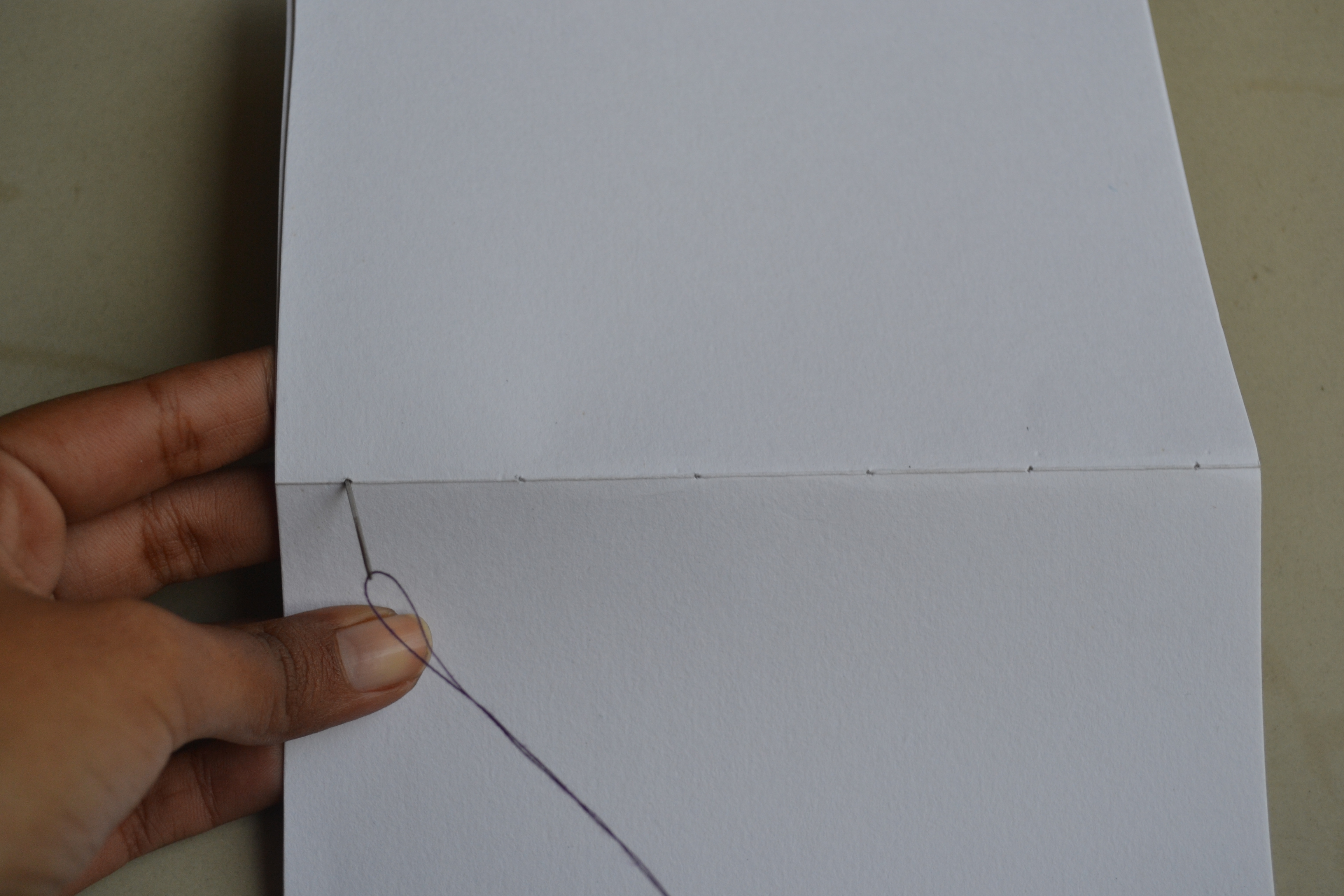
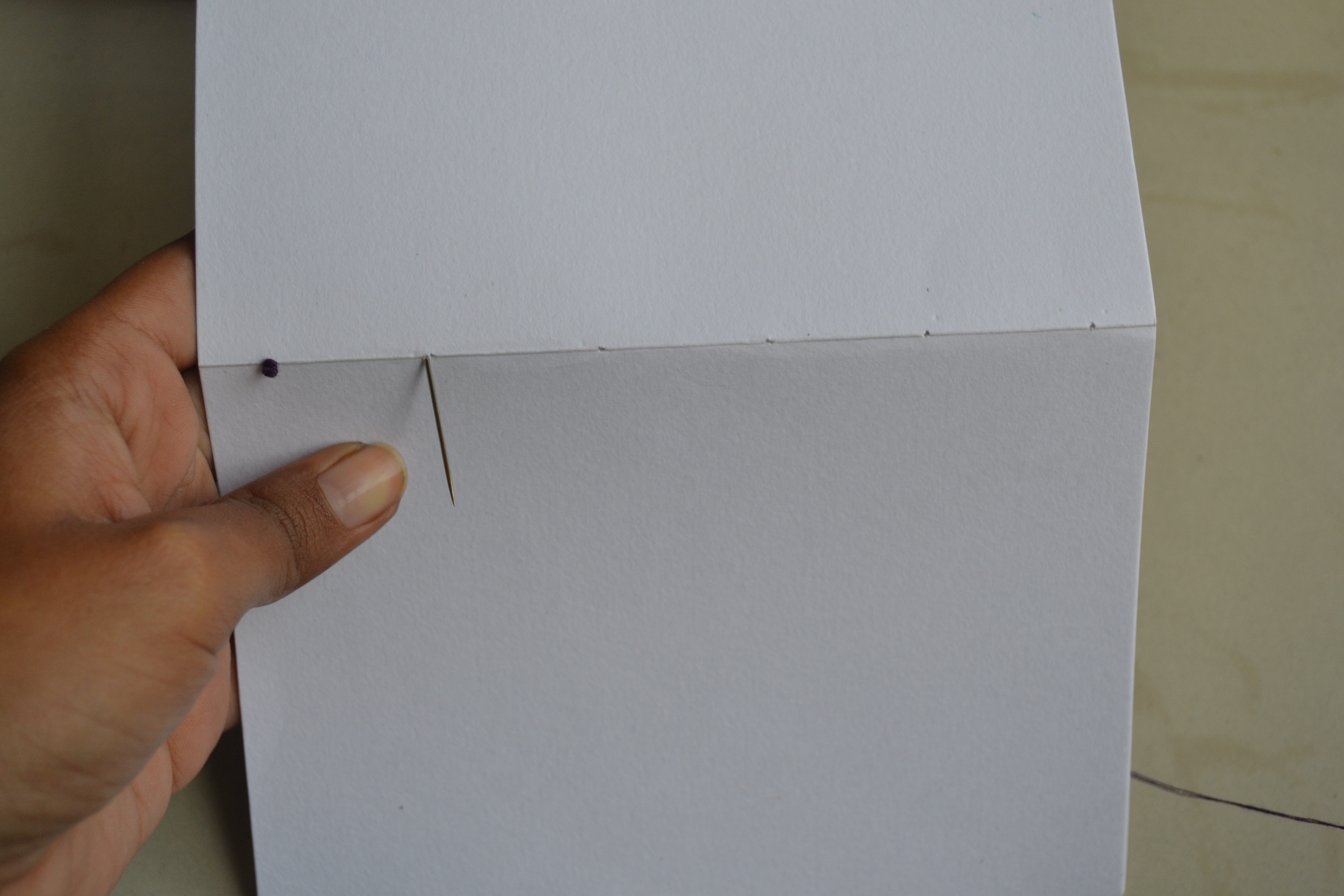
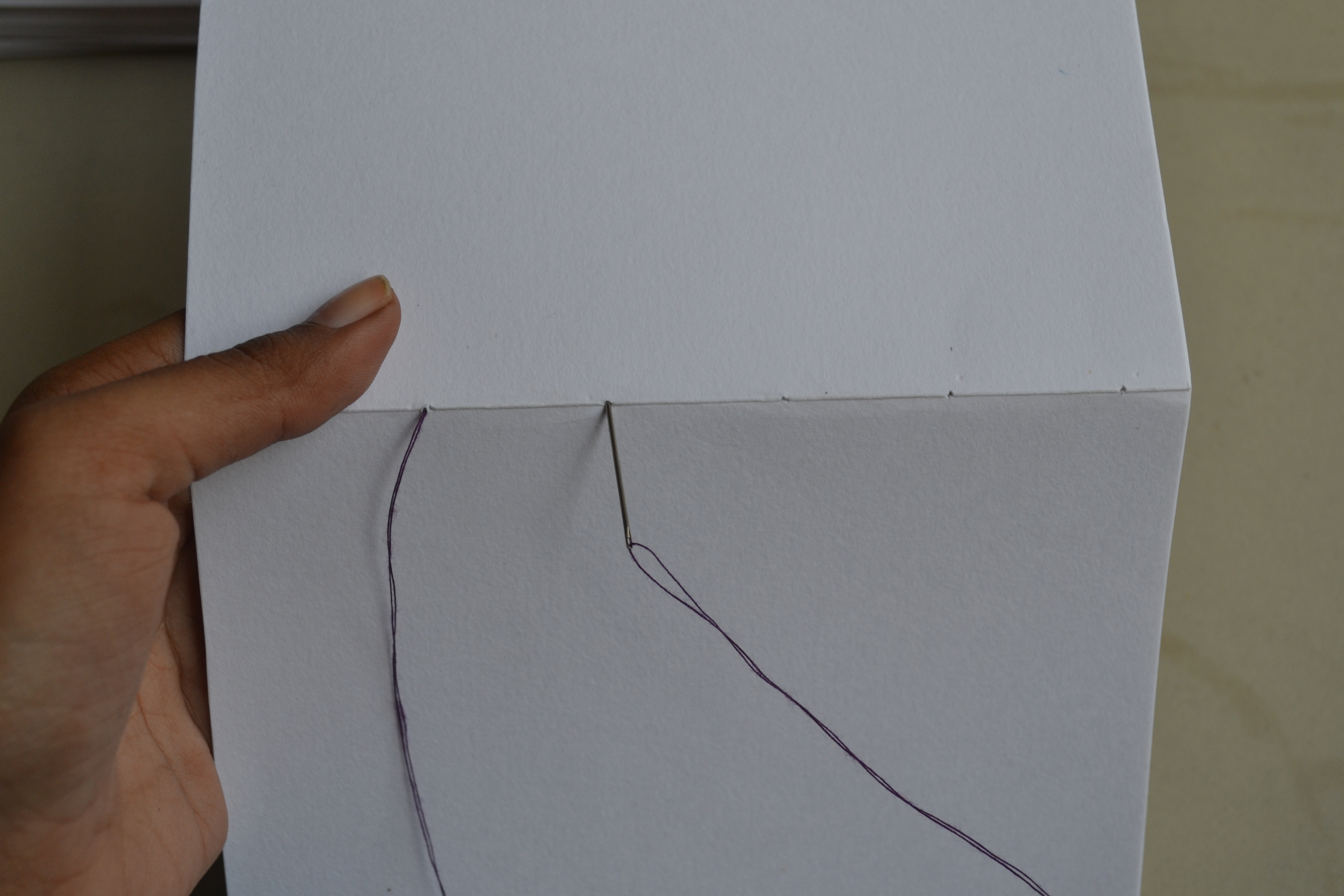

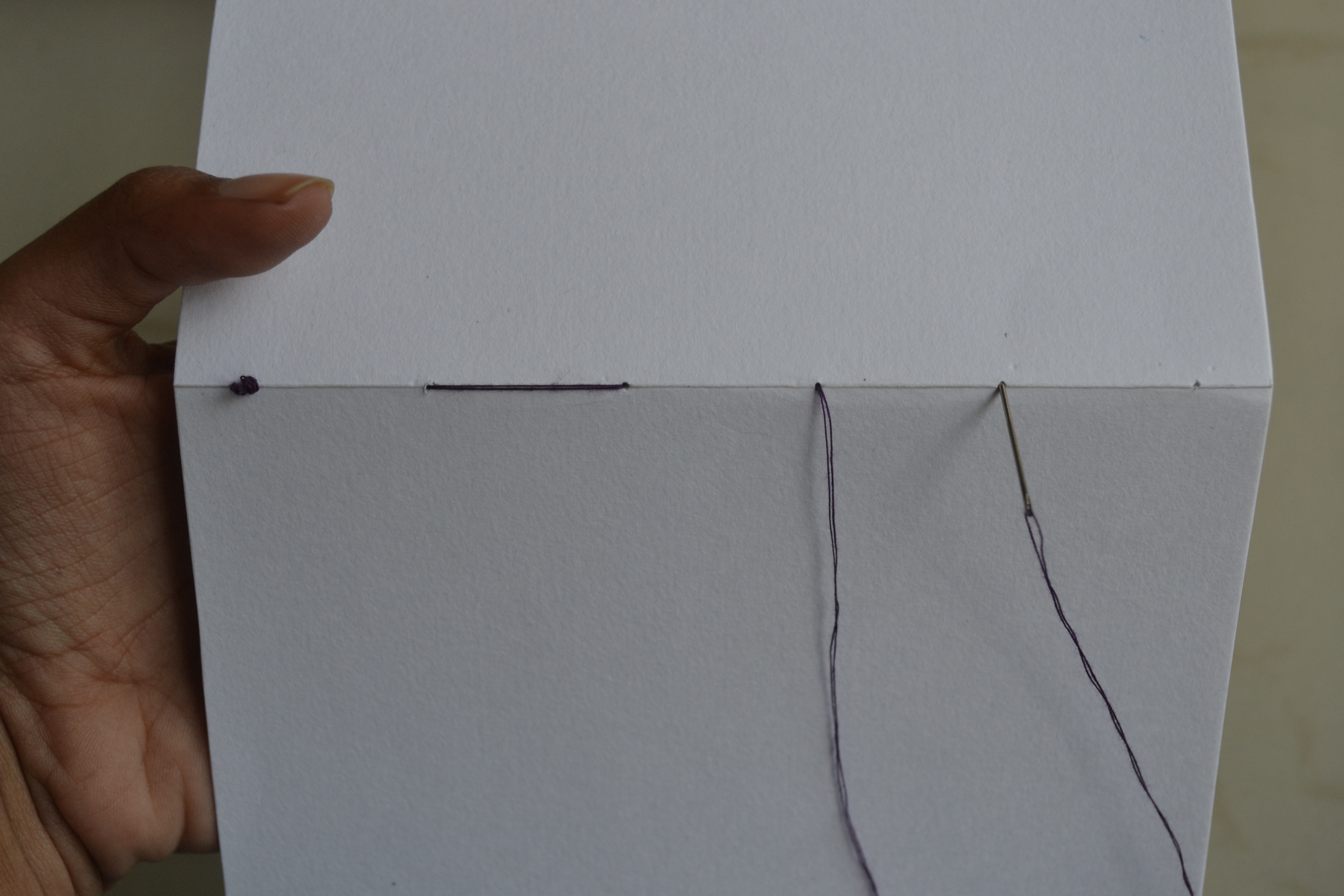
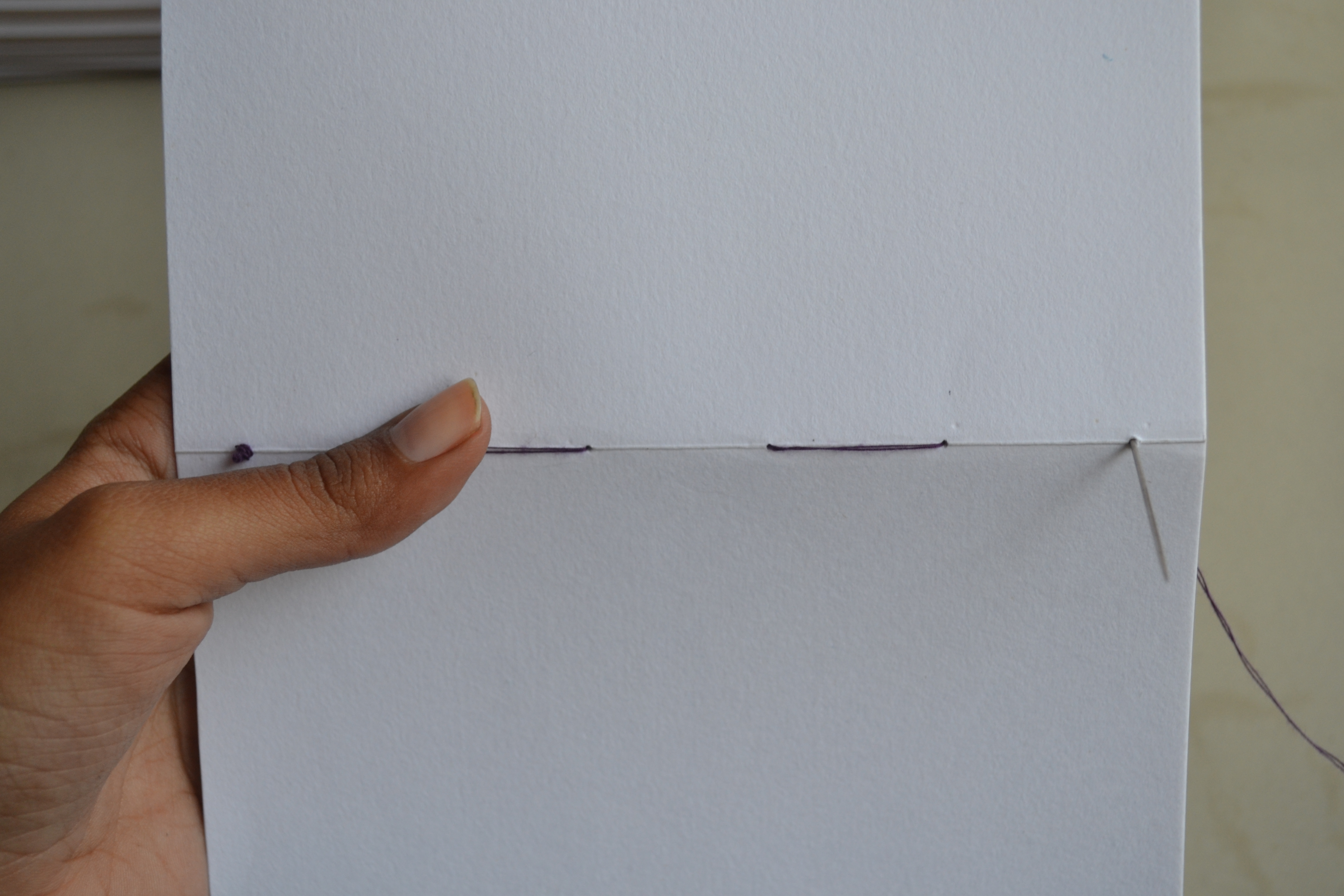
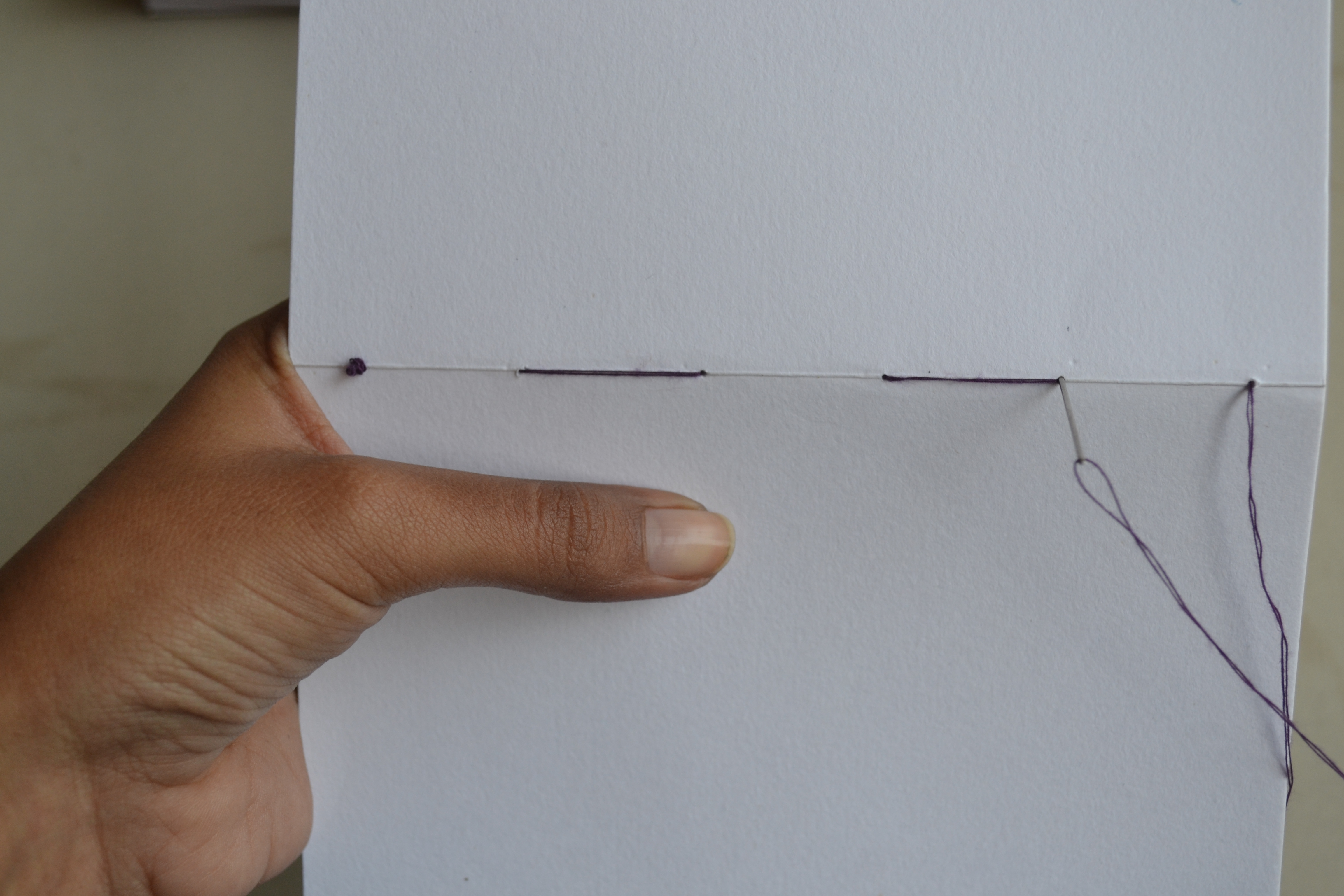
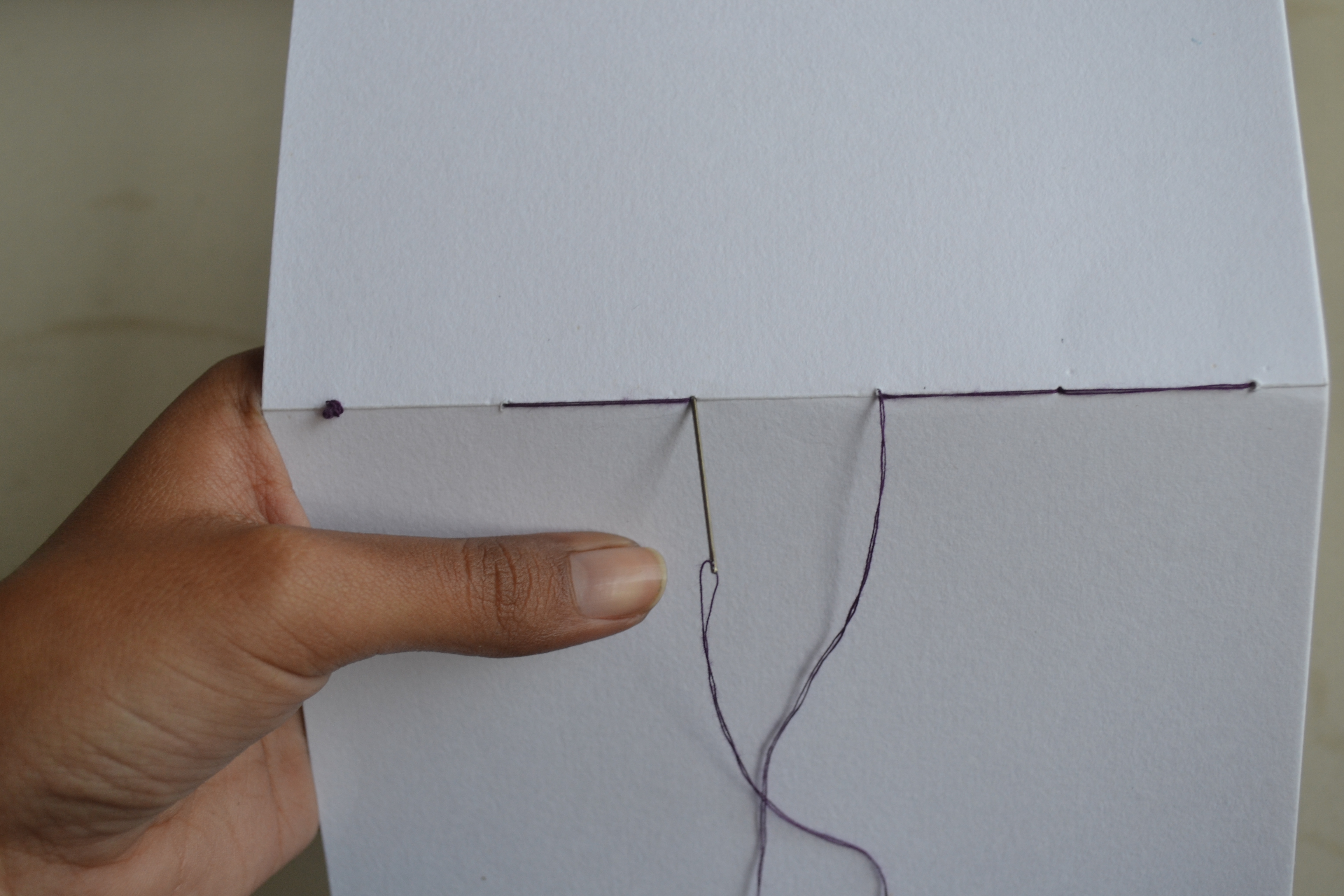
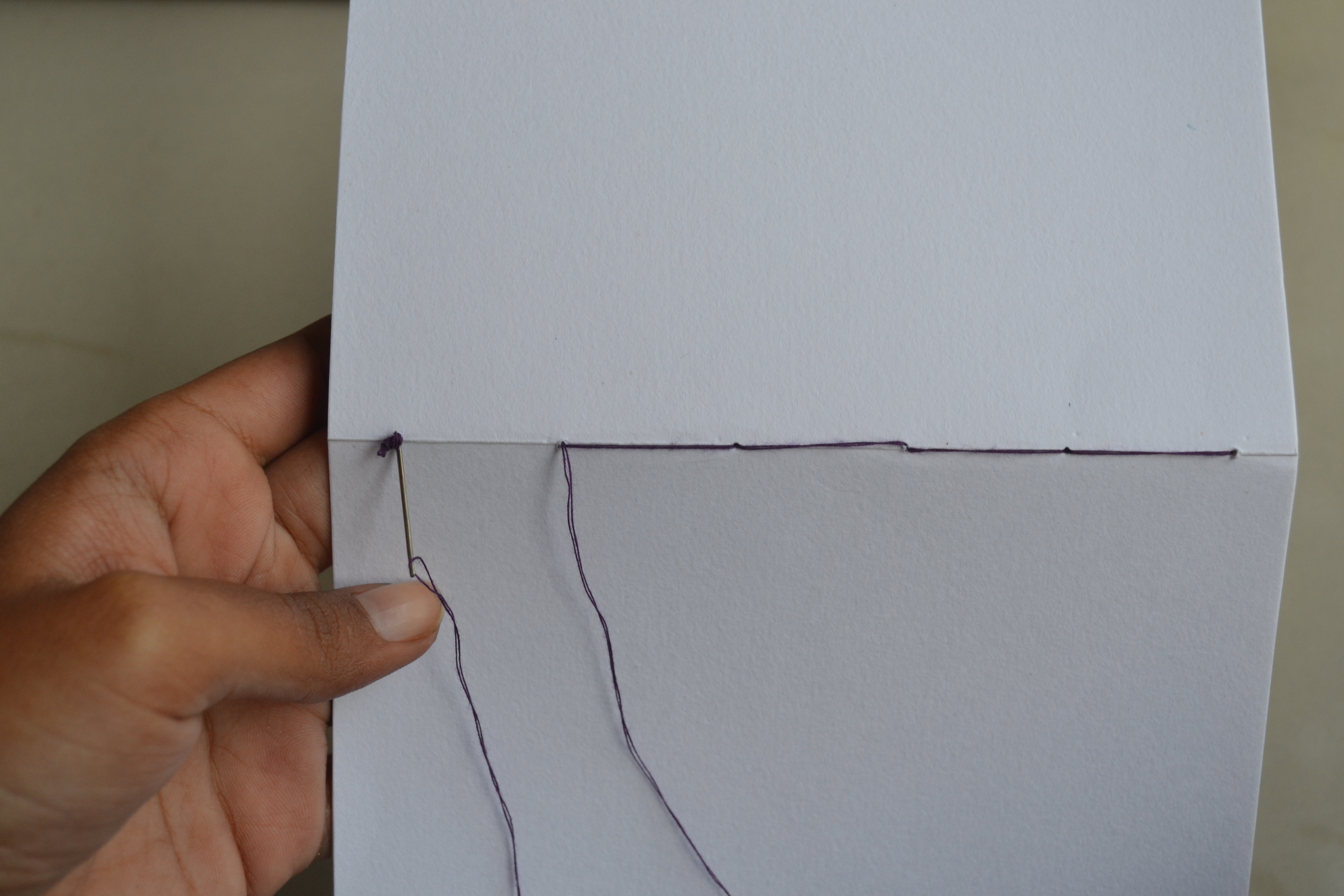
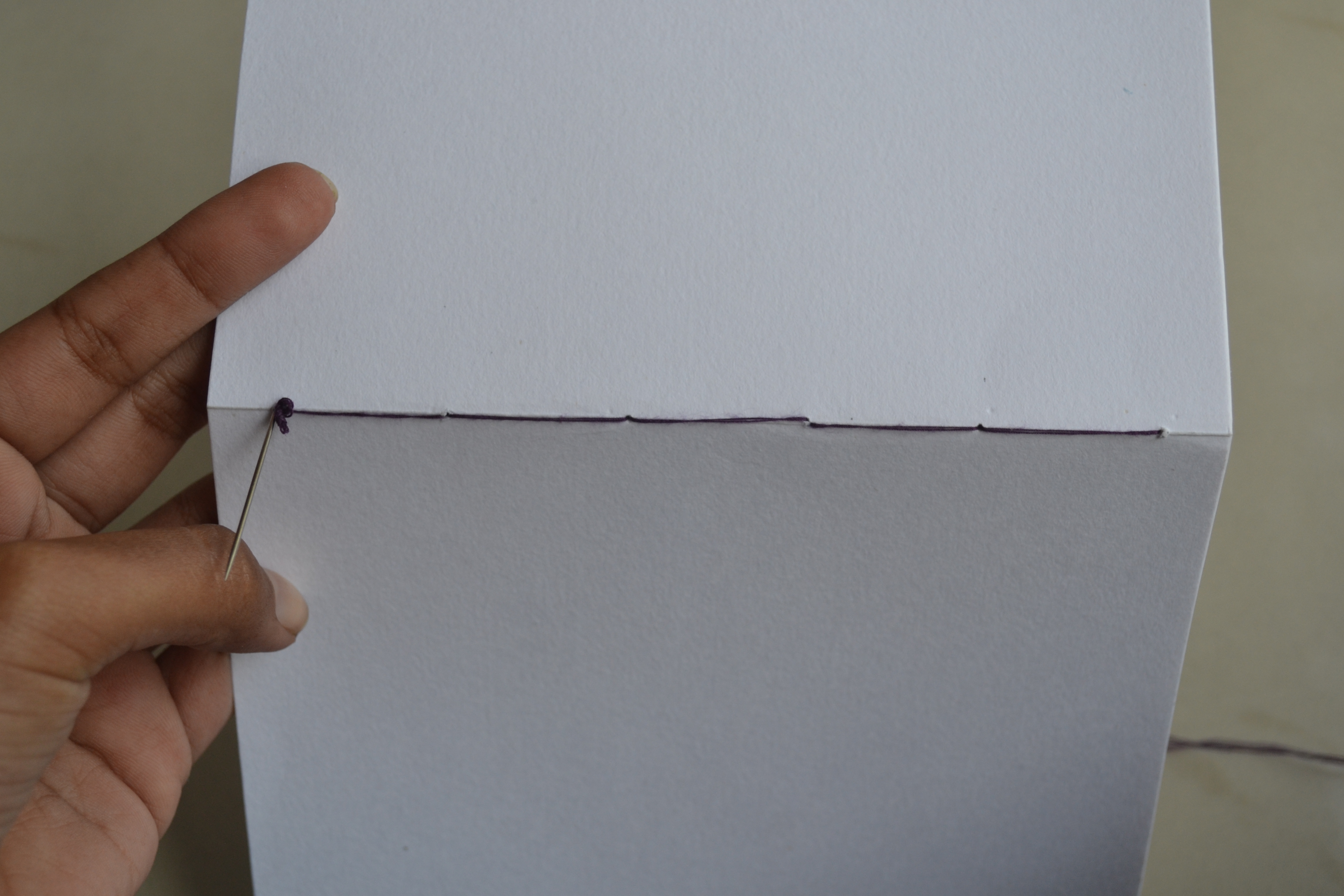
Start out by double threading you needle and tie a knot at the end. I took about a meter of double threaded thread (so 2 meters in total), which was sufficient to do the entire notebook. Ideally, I would have used white thread, but it would not have been visible on camera, so I went for a darker color.
So taking you bottom most signature, needle your thread from the outside to the inside on the first hole. Then out from the second, then in from the third. Out from the fourth, in from the fifth and again out from the sixth.
Now needle your thread into the fifth hole, then out from the fourth, then in then out, so on and so forth until you reach the last hole.
Once in the last hole, tie a knot on the inside of the signature, then thread out our needle from the first hole itself.
If the text is confusing, check out the images, the process can be easily understood.
You first snake your way from up to down, then down to up. This way you have visible threads on both side of the signature, between each hole.
This is your first signature done.
Binding Part 2: Add on the Second Signature
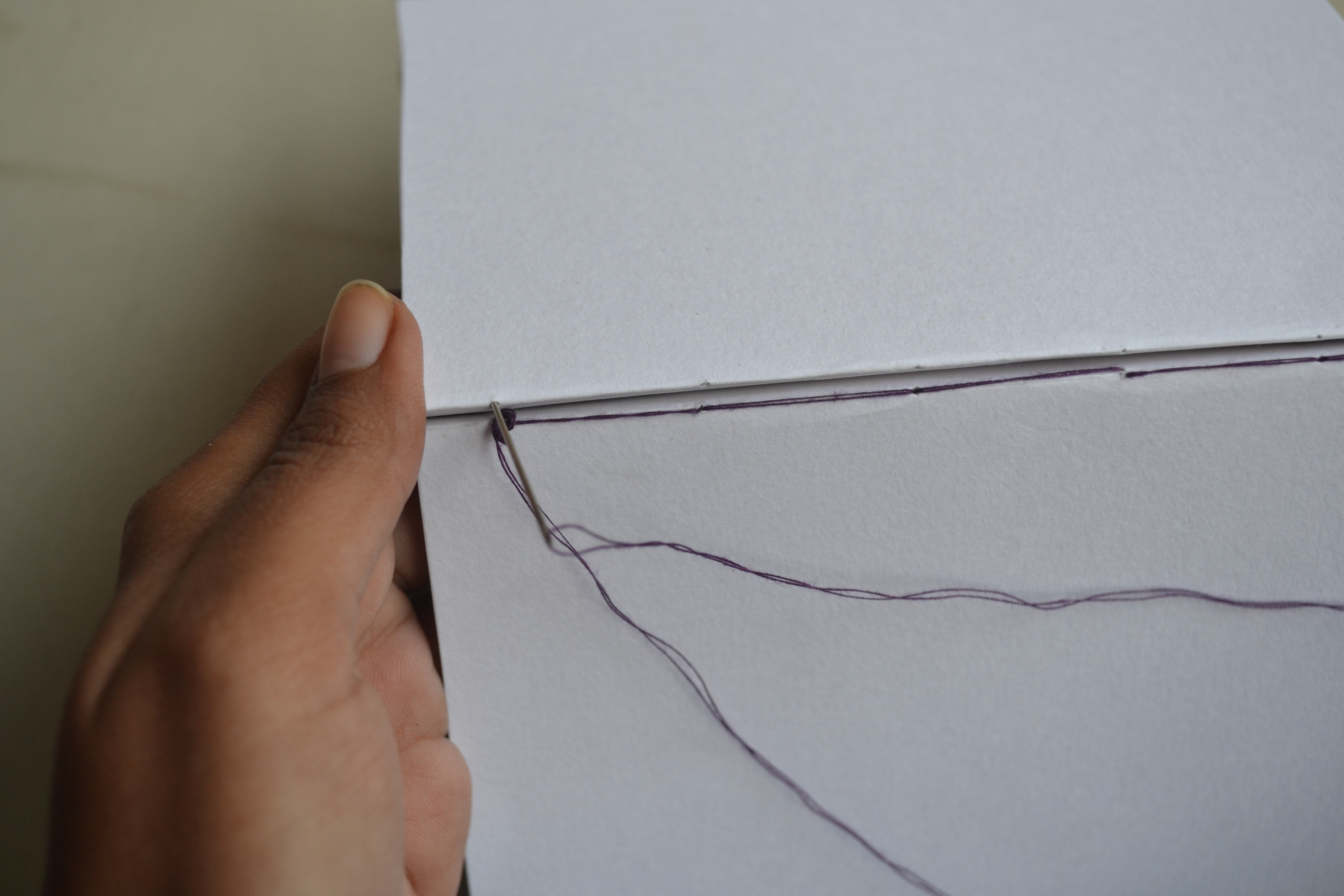
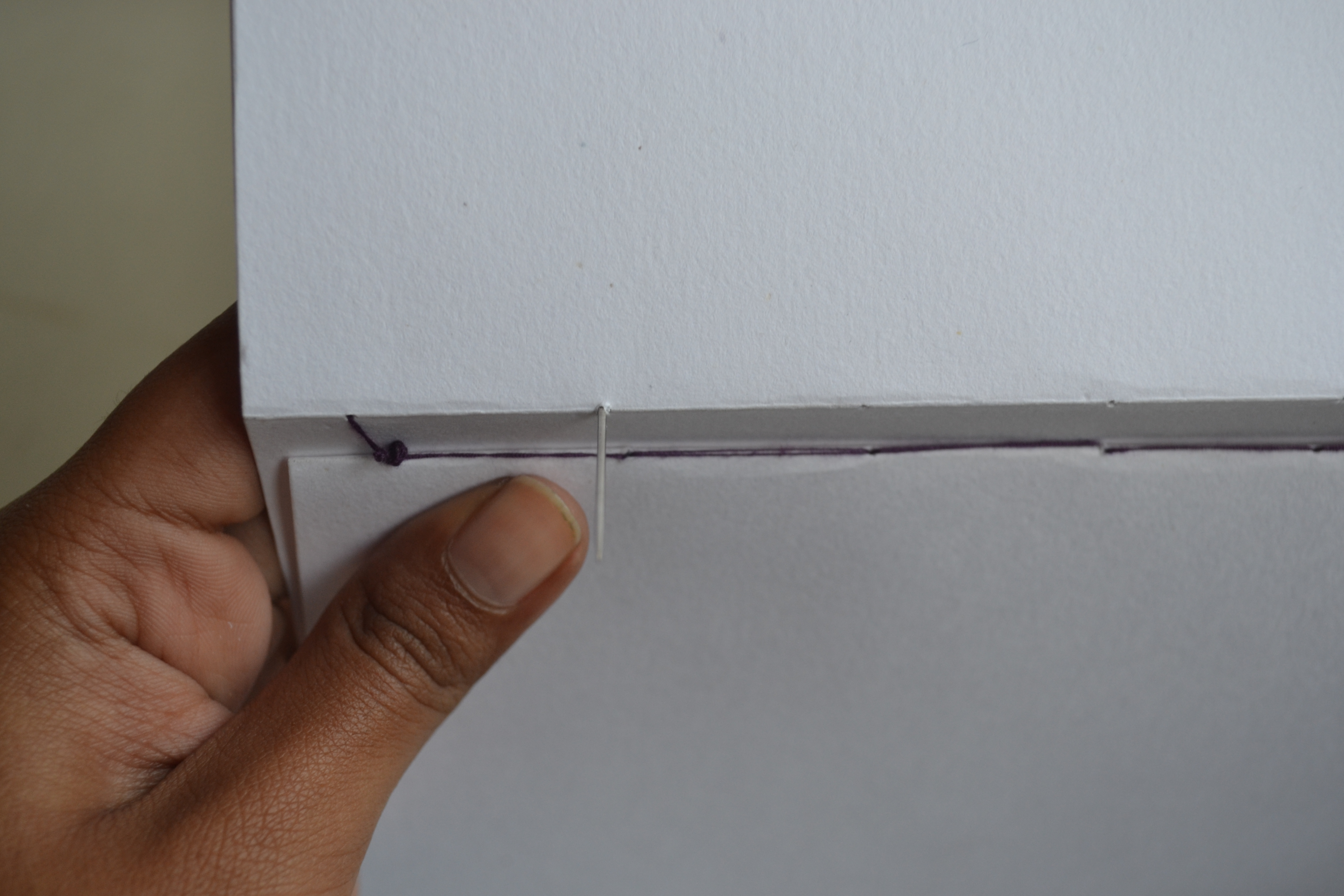
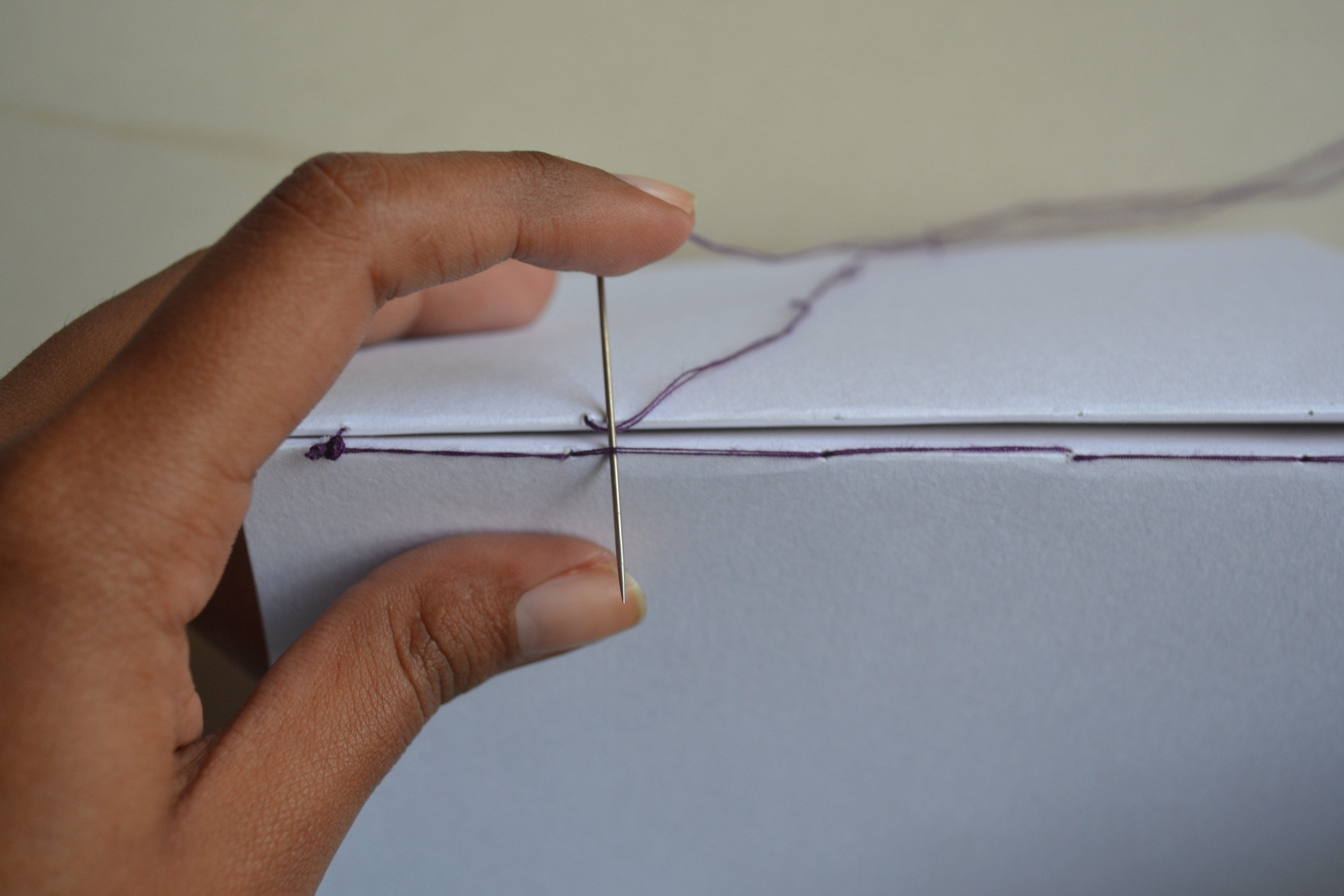
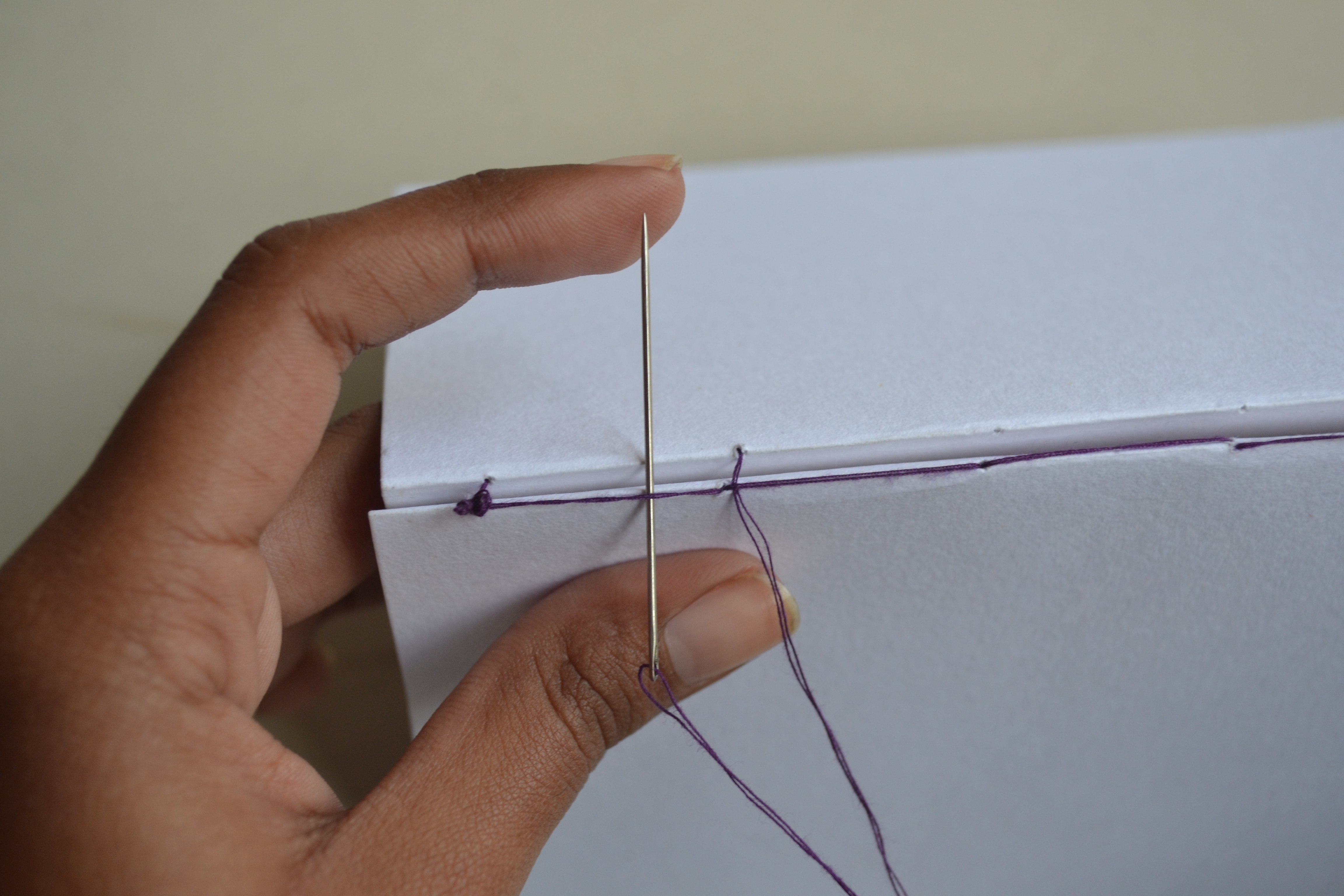
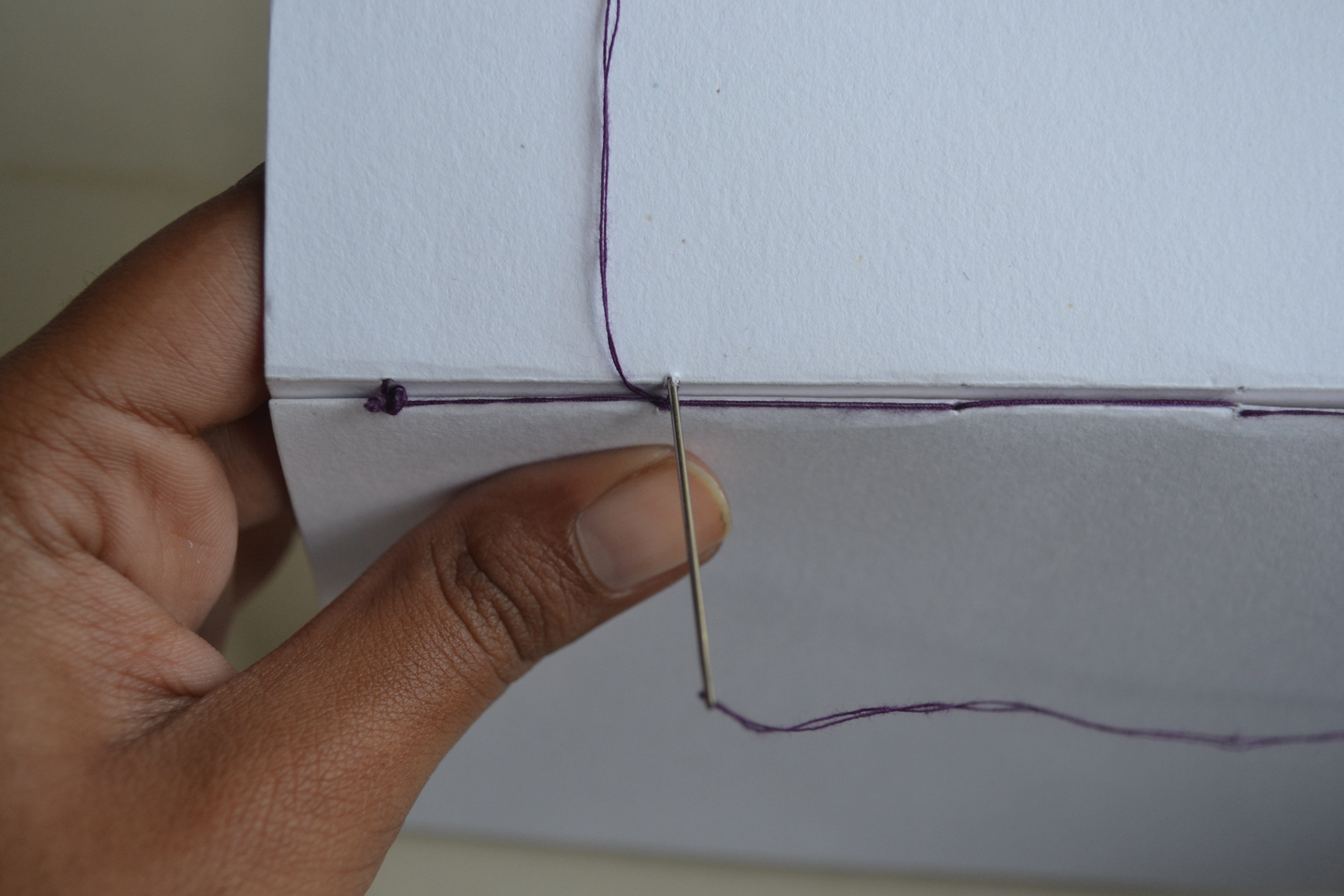
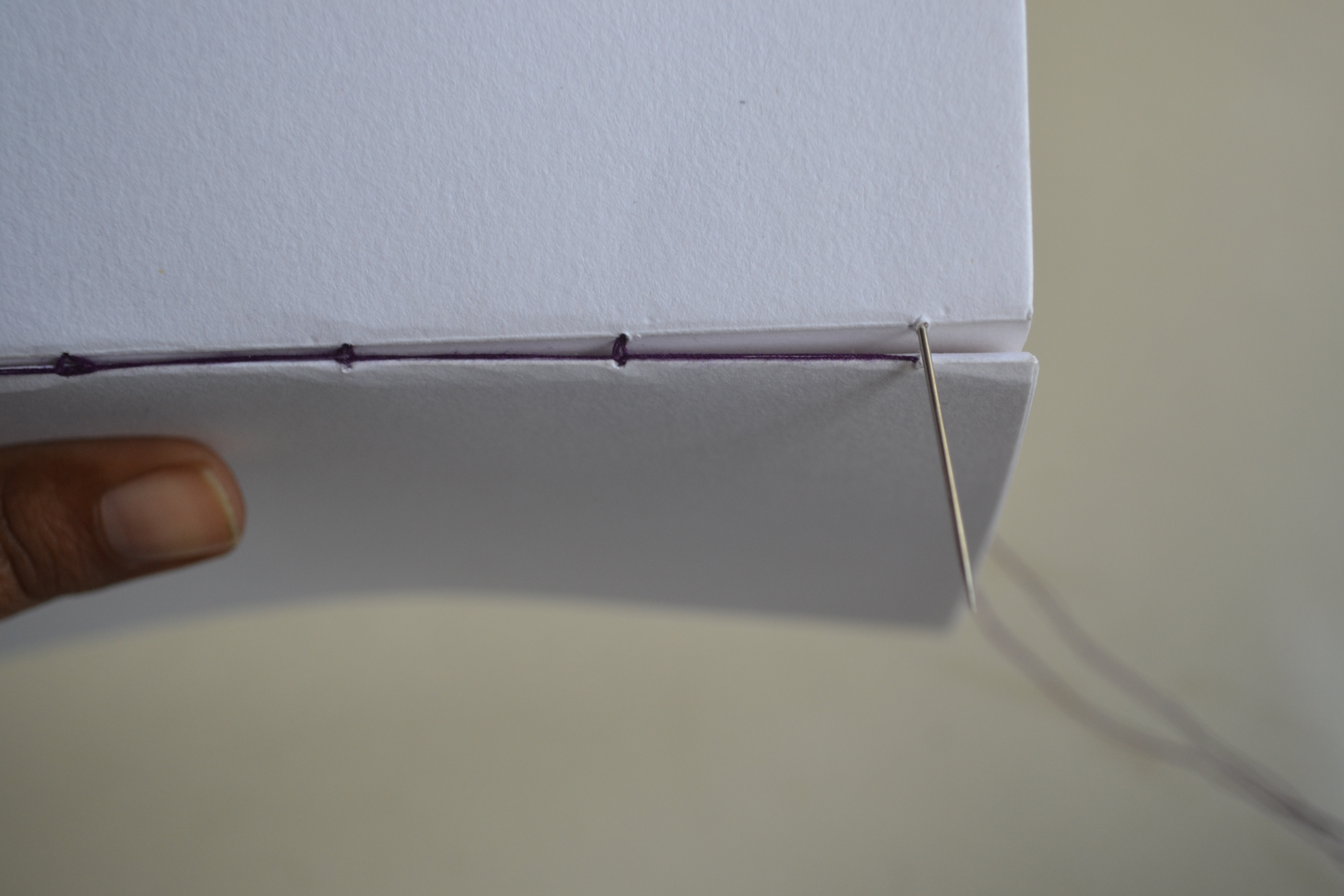
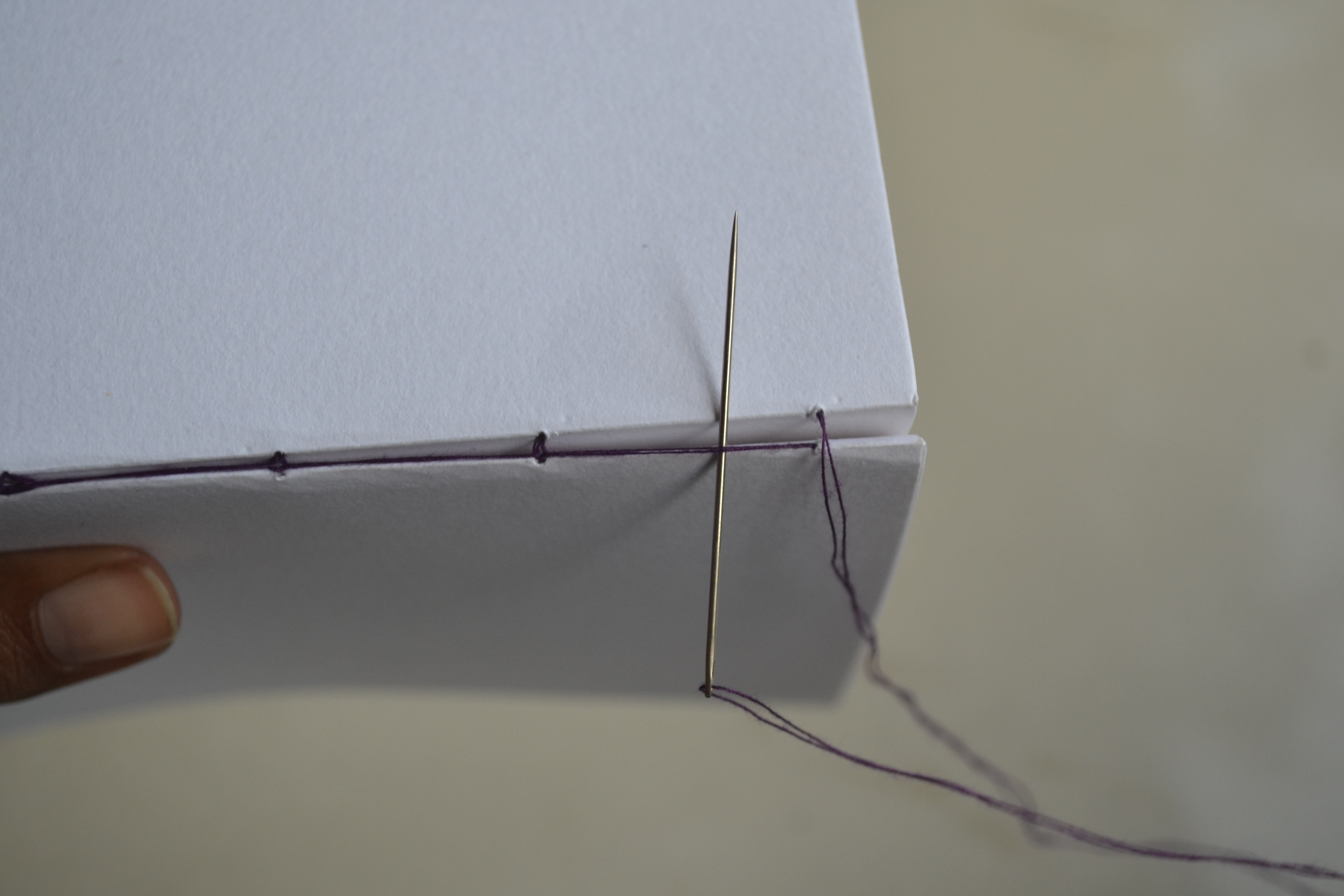
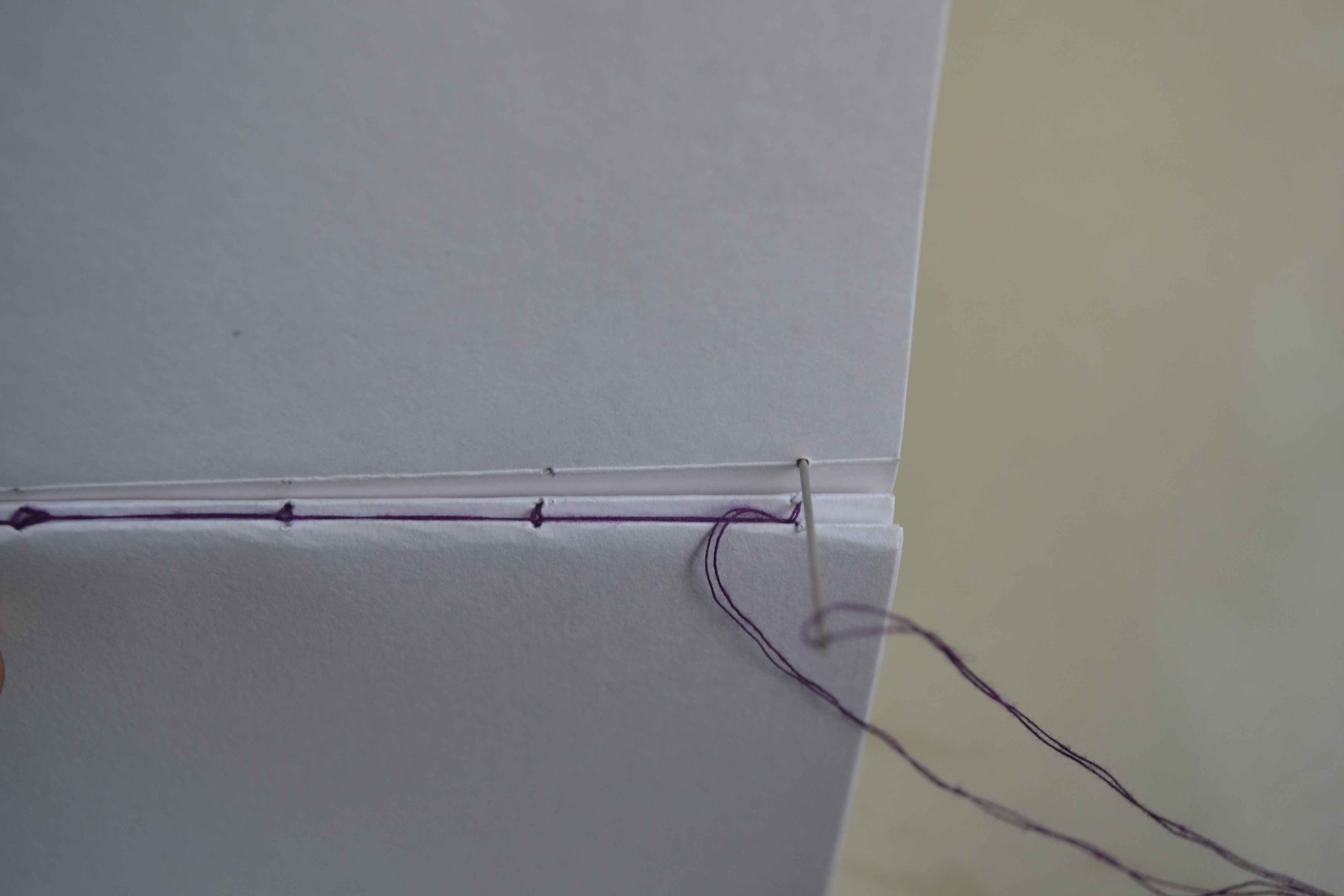
Once you are done with the first signature, time to add another.
In the last step, we left the thread coming out from the first hole.
Now place your second signature on top of the first, and thread through its' first hole. then take it out from the second.
Now take your needle under the exposed thread between the second and third hole, from top to bottom. Then through the exposed thread between hole 1 and 2 from bottom to top. Then needle into the second hole again. Do this same thing to subsequent holes until the final hole.
In the sixth hole, thread the needle through the exposed thread between 5 and 6 from bottom to top, and instead of threading the thread through the same hole, take the third signature, and needle the thread into the sixth hole of that signature.
Binding Part 3: Loop the Loop
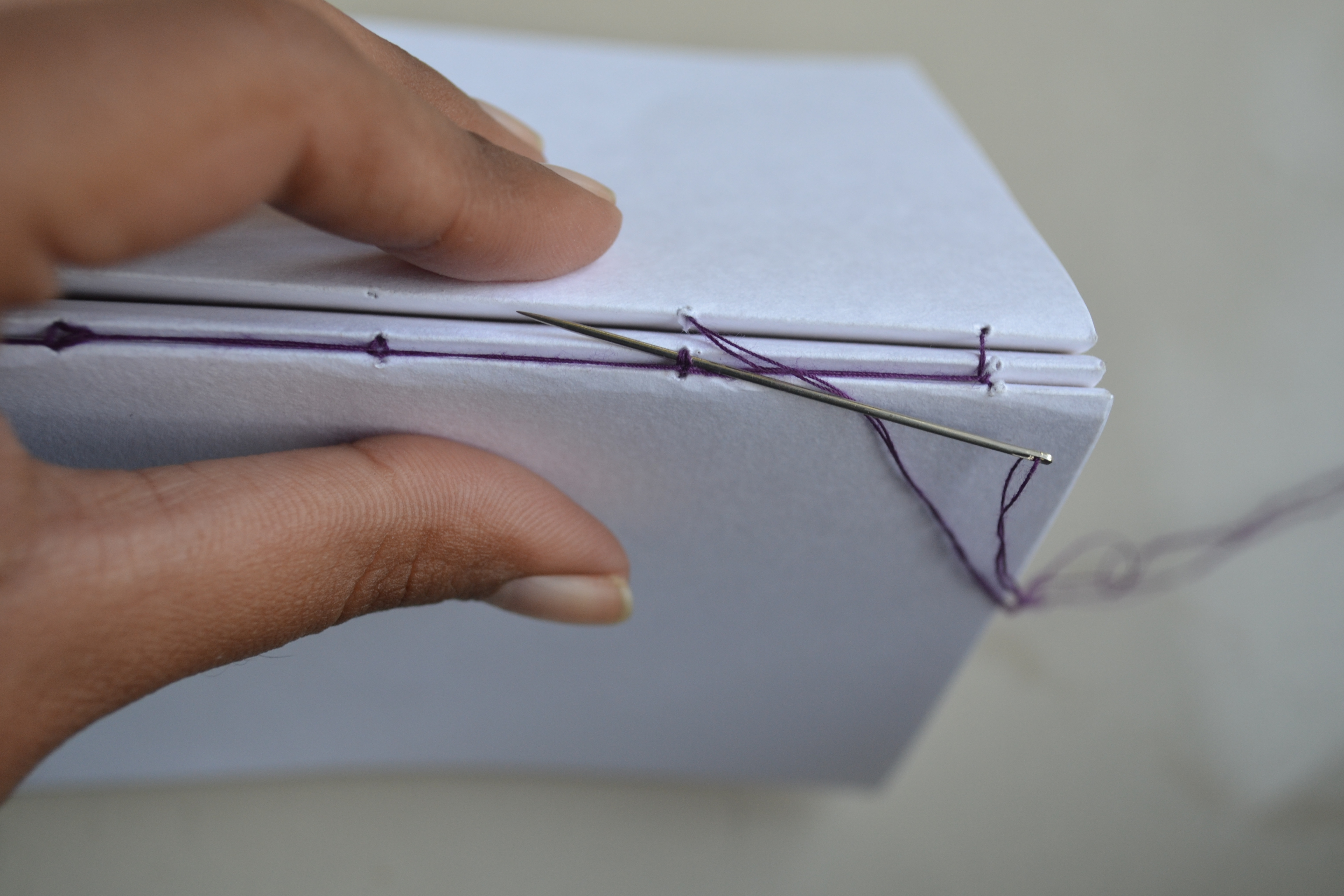
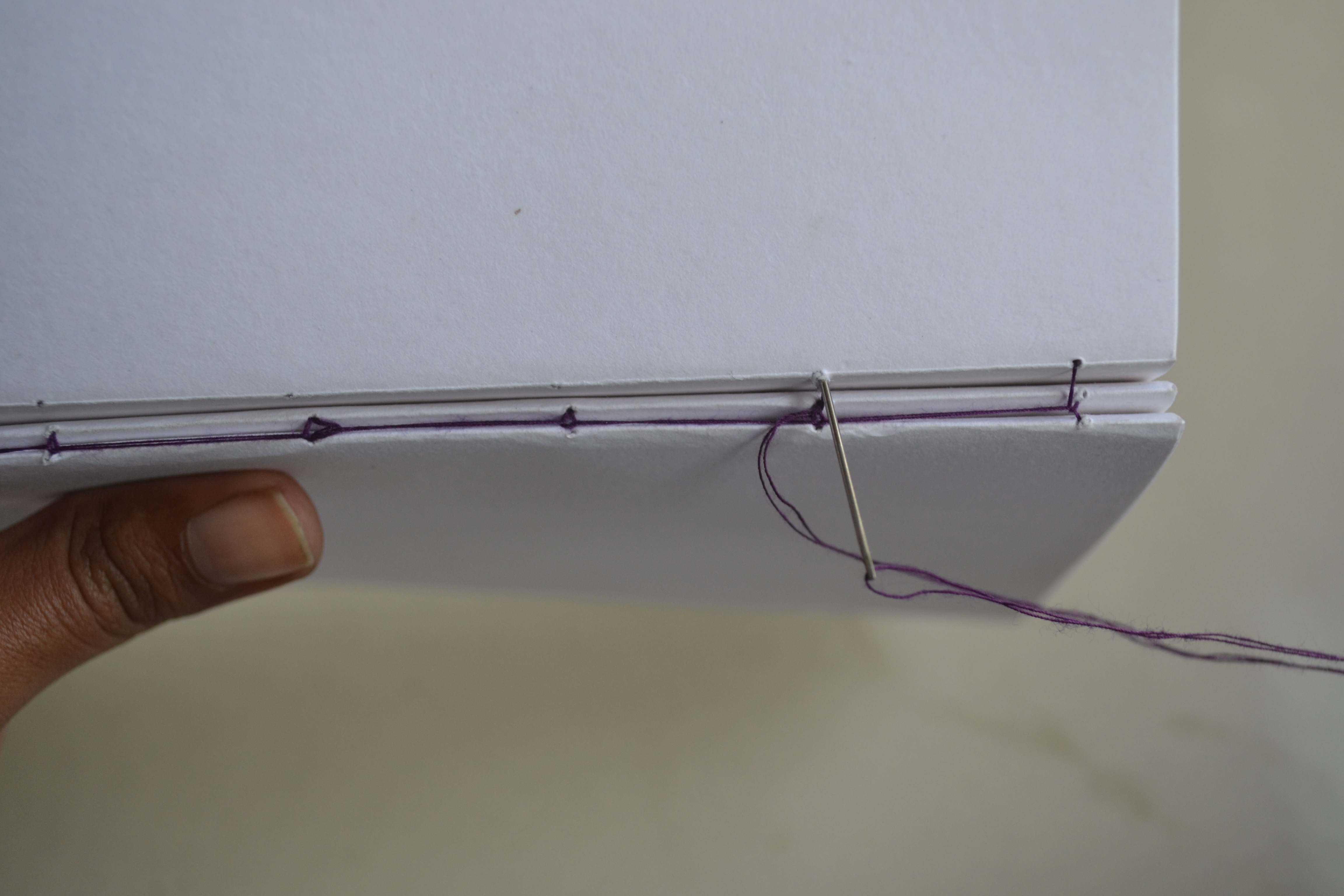
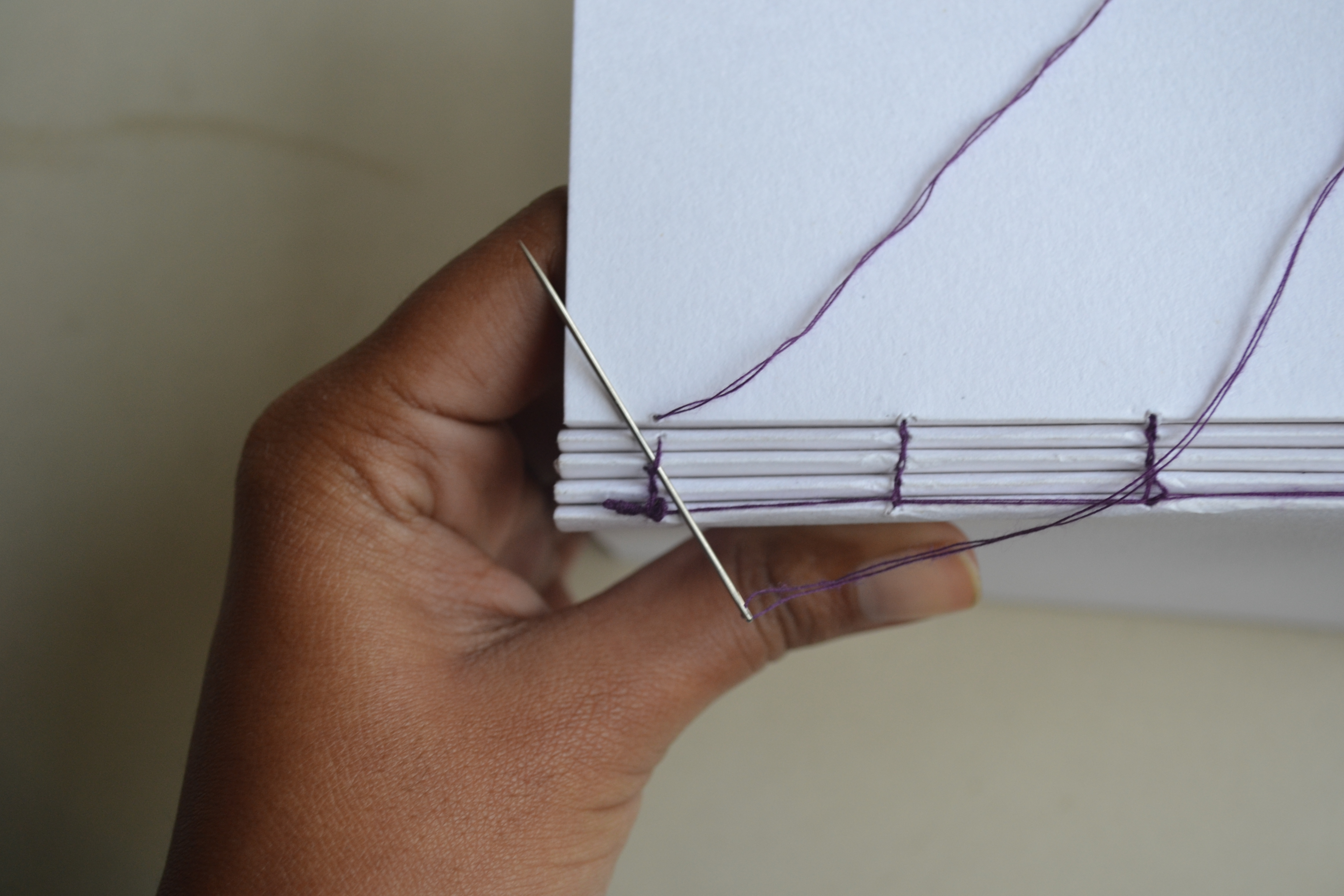
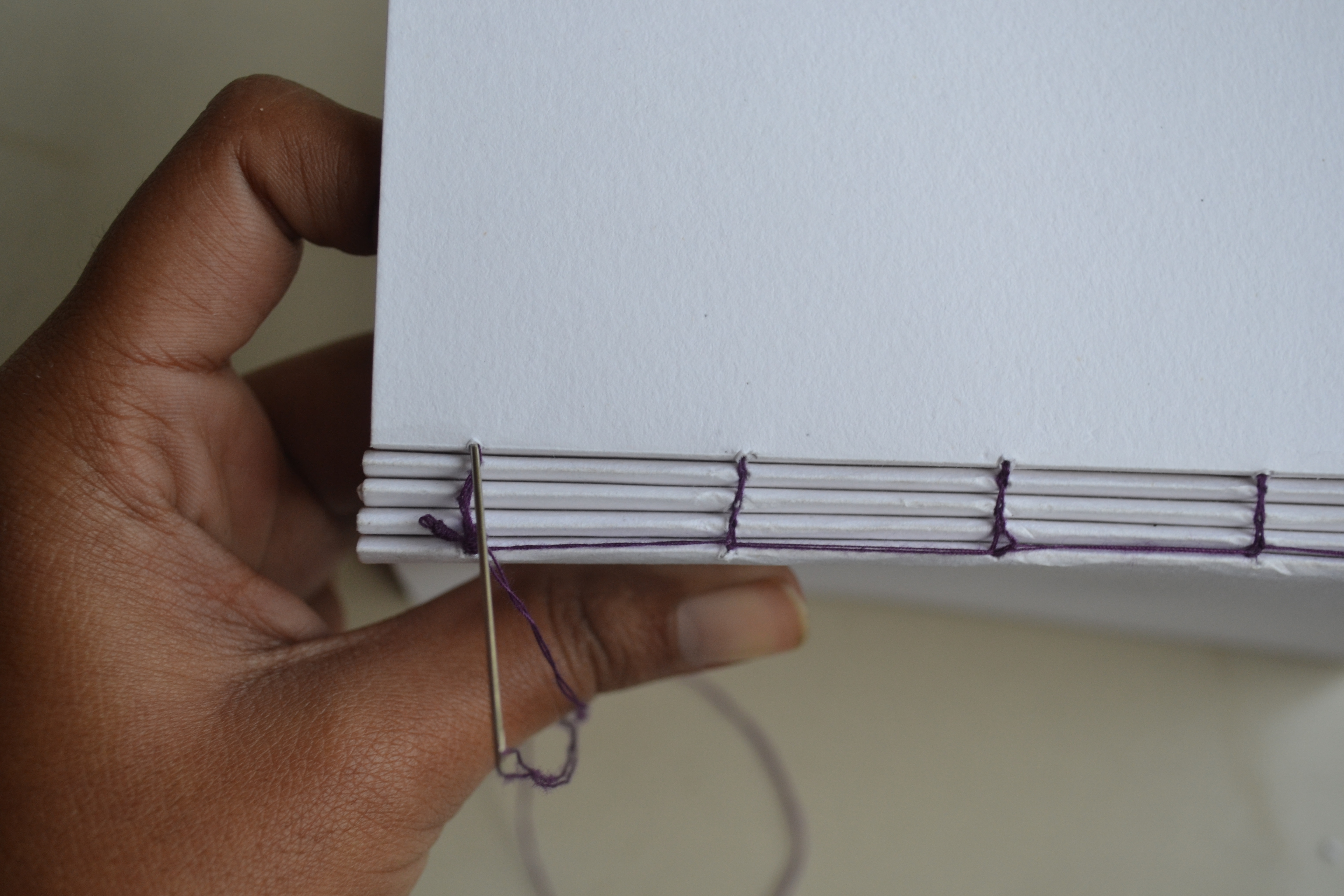
Now that you have your third signature stringed on, take the thread out from the fifth hole.
Now thread your needle under the loop created at the same hole on the last signature (this is more clear in the attached photograph). And then thread into the fifth hole. So basically, you are looping subsequent signatures onto the previous one. This step will be a lot easier if you have a curved or bendable needle.
Once you reach the first hole, Loop the same way, but instead of threading into the same hole, thread into the next signature. That is, when you reach the last hole, instead of going into the same hole, you go into a new signature.
Loop on as many signatures as you want using this same technique.
Binding Part 4: Finish It Off

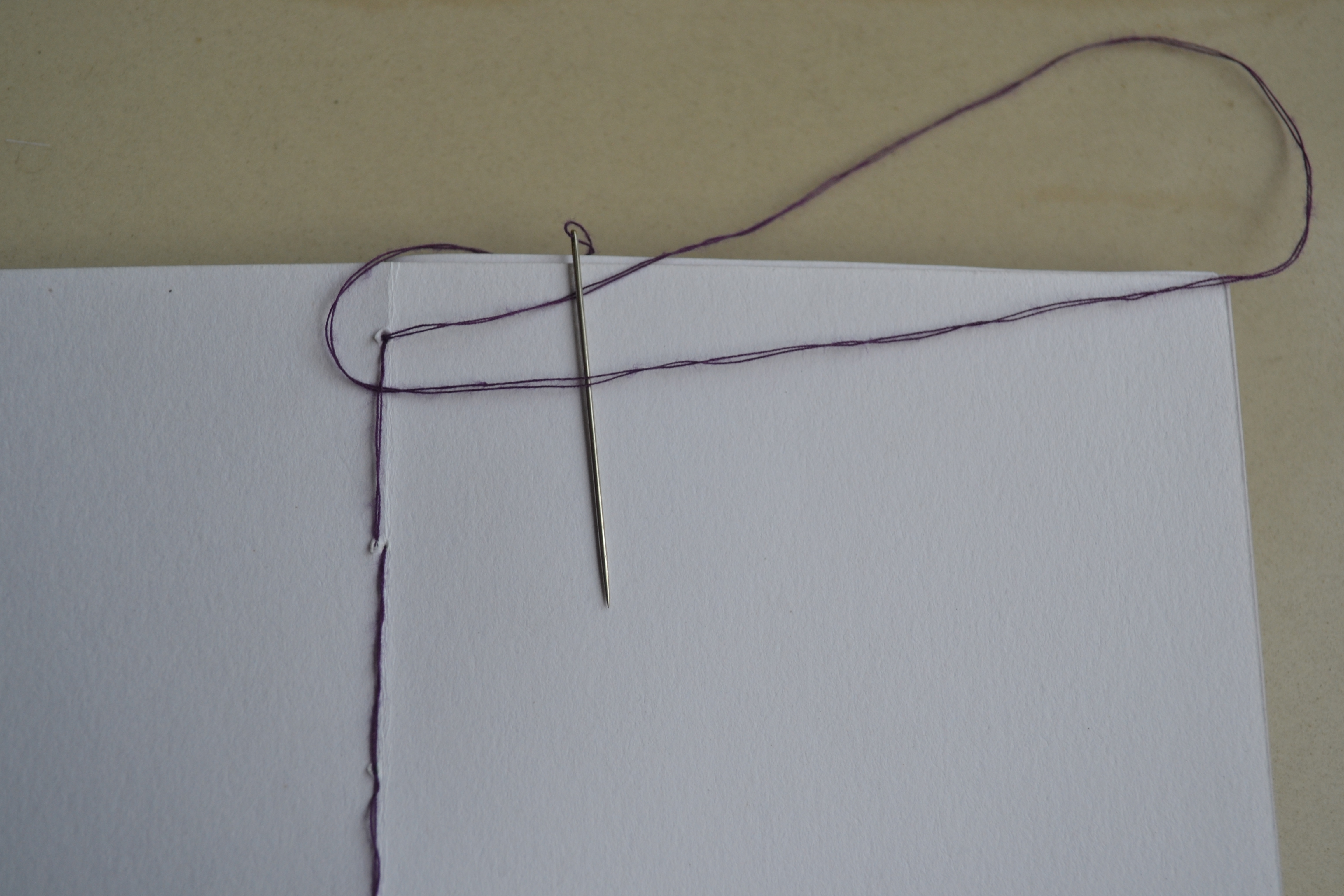
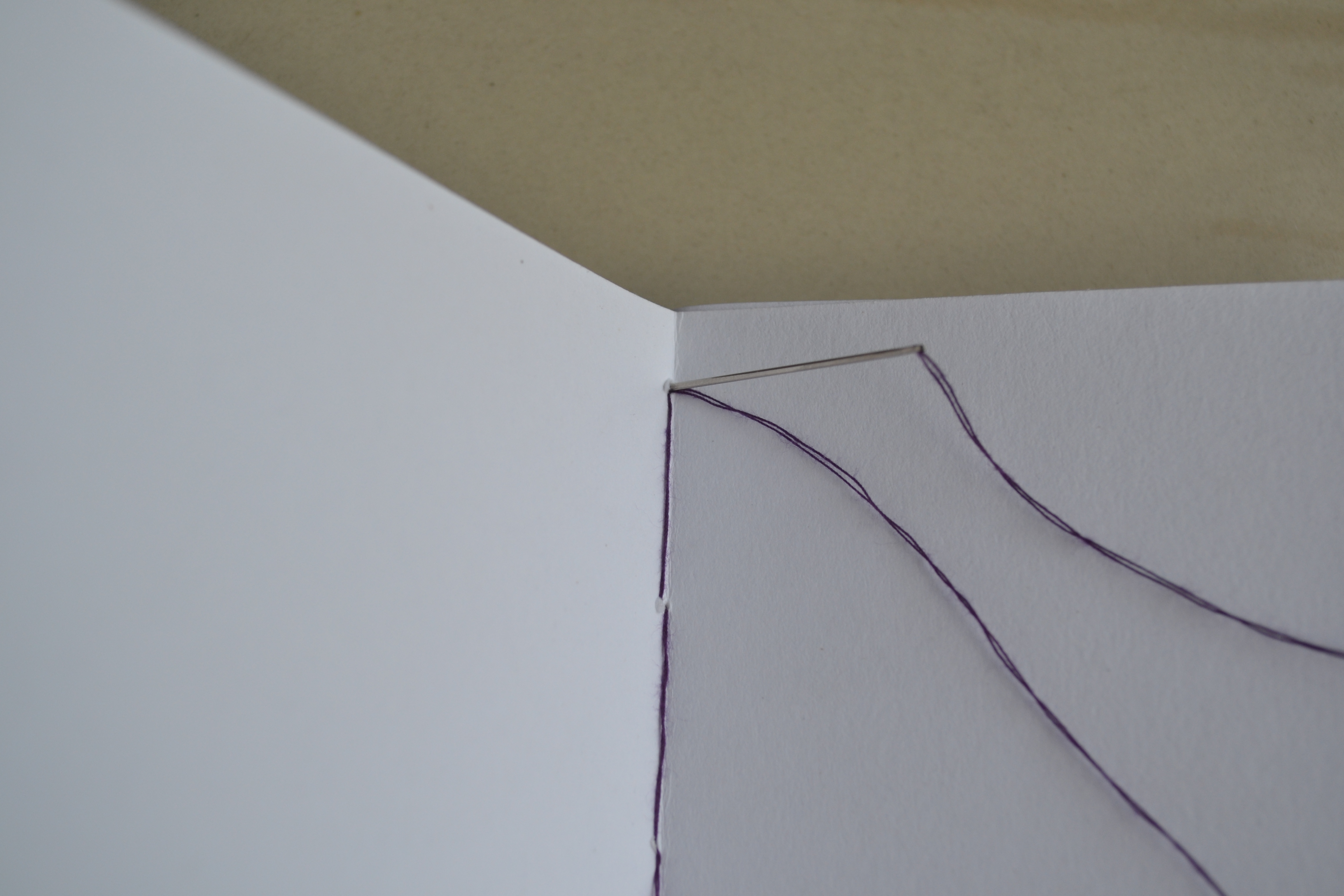

If you have no more signatures left to add and you are on the last hole on the last signature, thread into the last hole and tie an knot, as shown.
Needle the thread out from the last hole and cut it off.
This is what the finished binding will look like.
Add a Spine

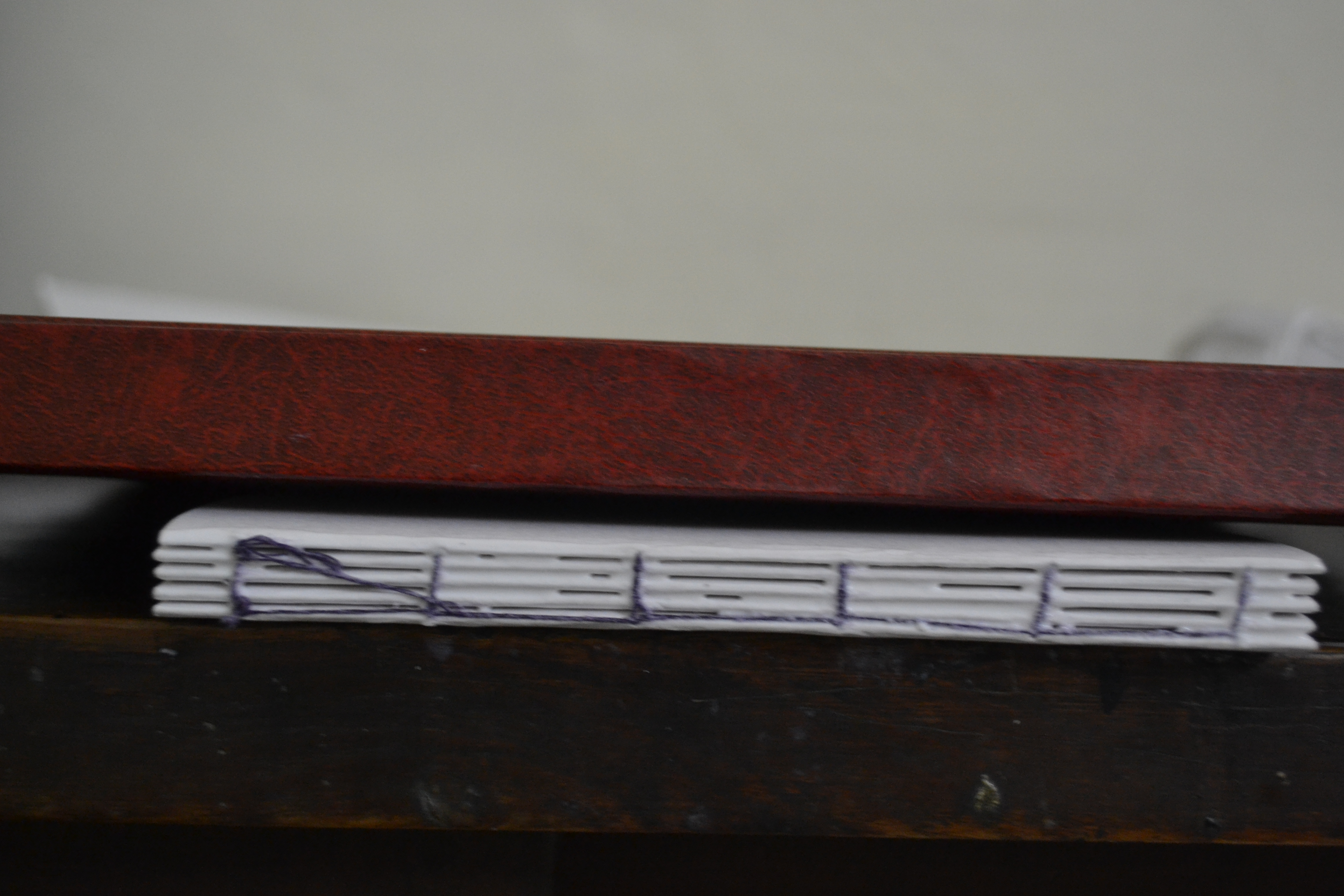
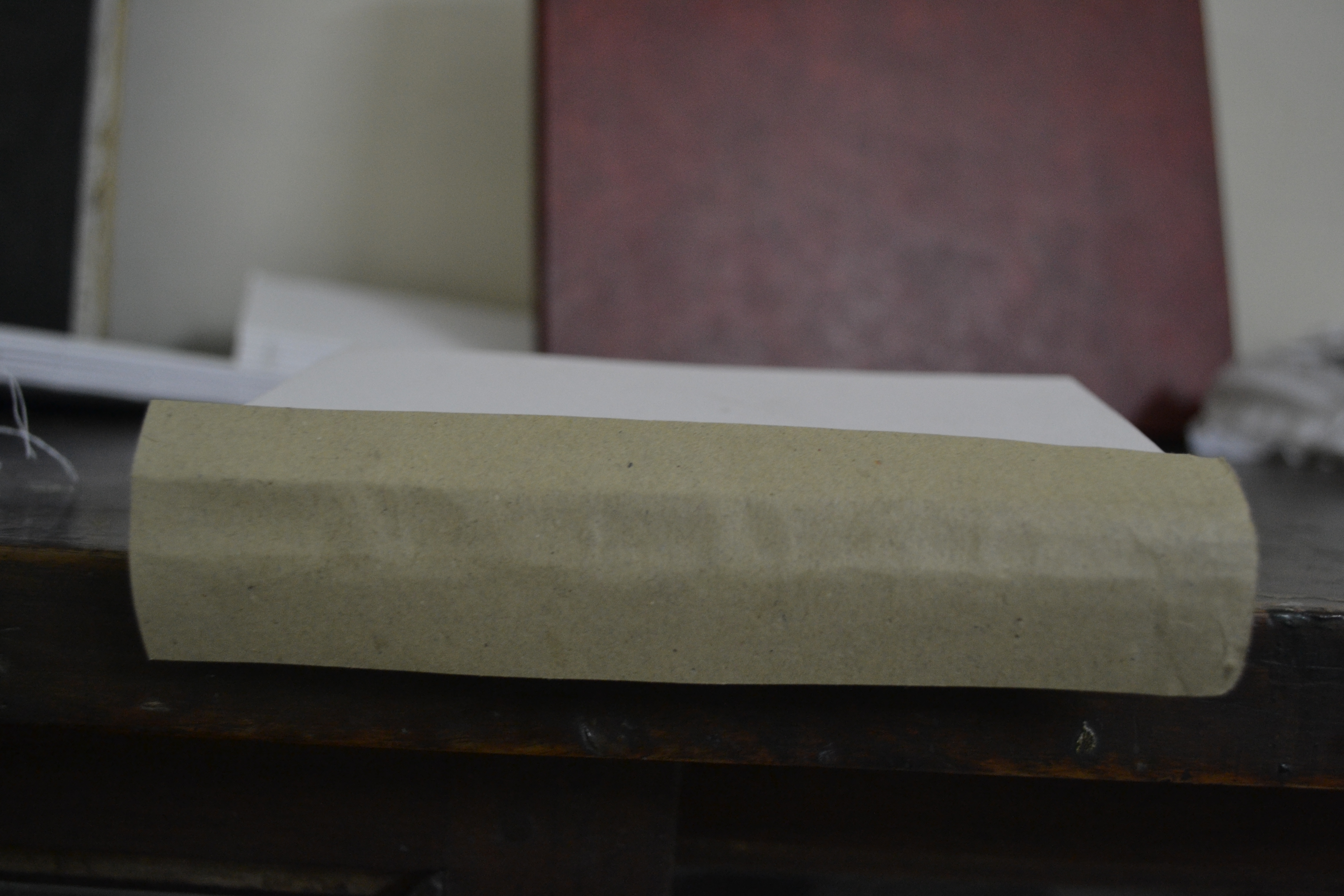
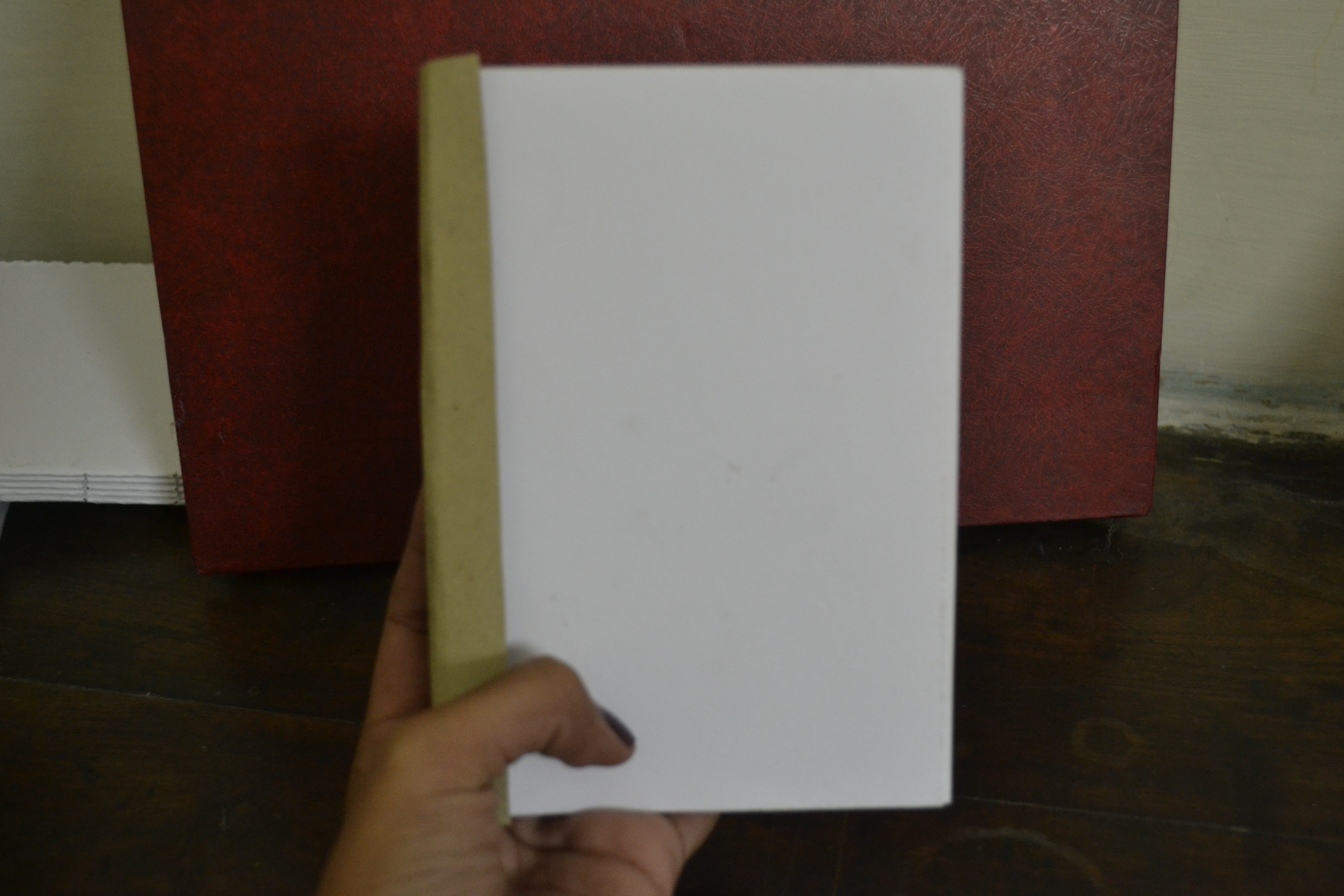
I add a spine before and after sticking on the front and back, because this gives more strength to the notebook.
To add the first spine I used brown paper, but you could use any strong paper that will not rip easily.
Place your book between a hard surface and some weight, this is so that glue will not seep in between the signatures, ruining the notebook. You could also used clamps.
Now slap on generous amounts of glue only onto the spine, and the stick on the brown paper.
Make sure the paper is broader than the width of the notebook so you have some extra hanging off of the ends.
Let this dry for a good 24 hours.
Make the Cover
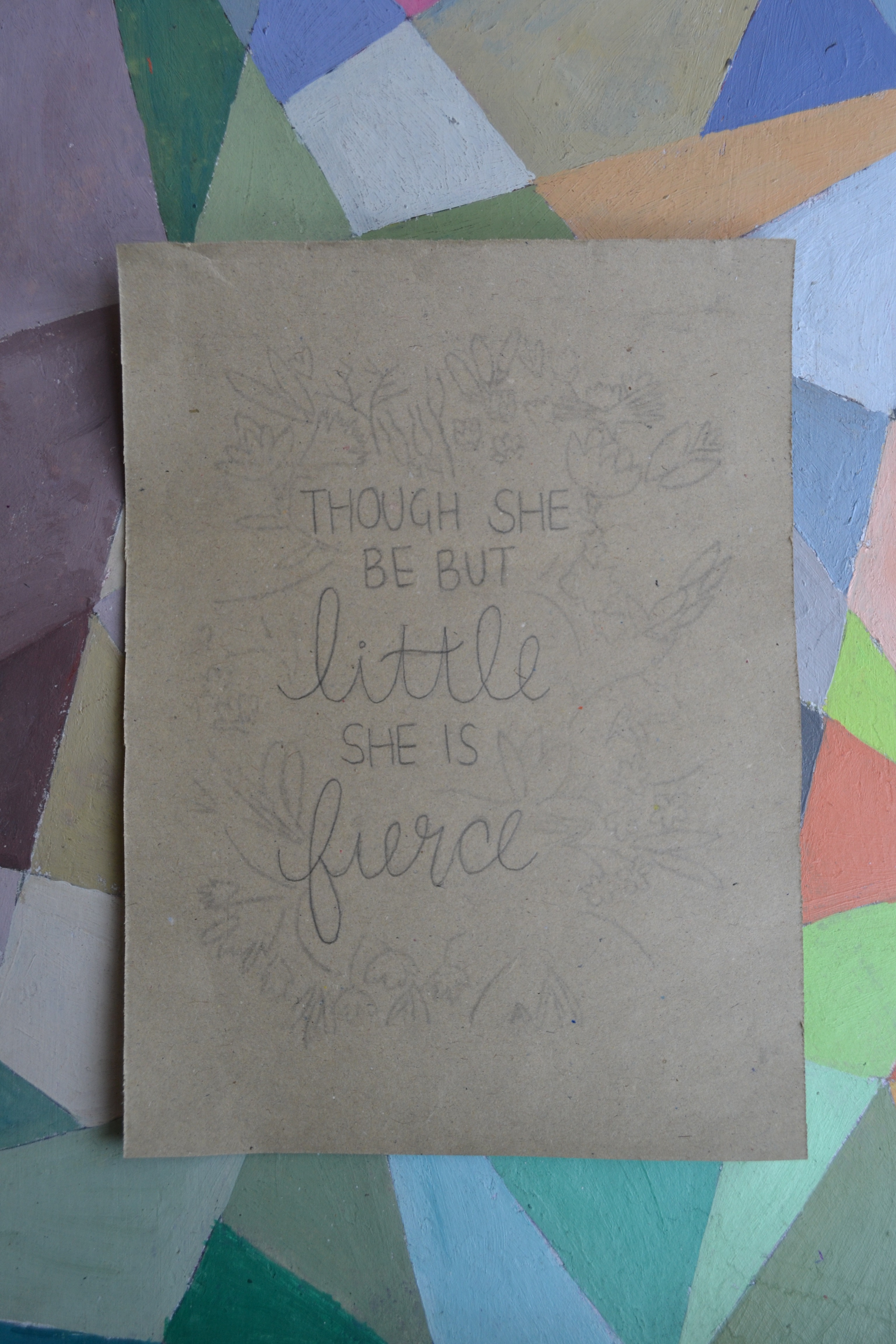
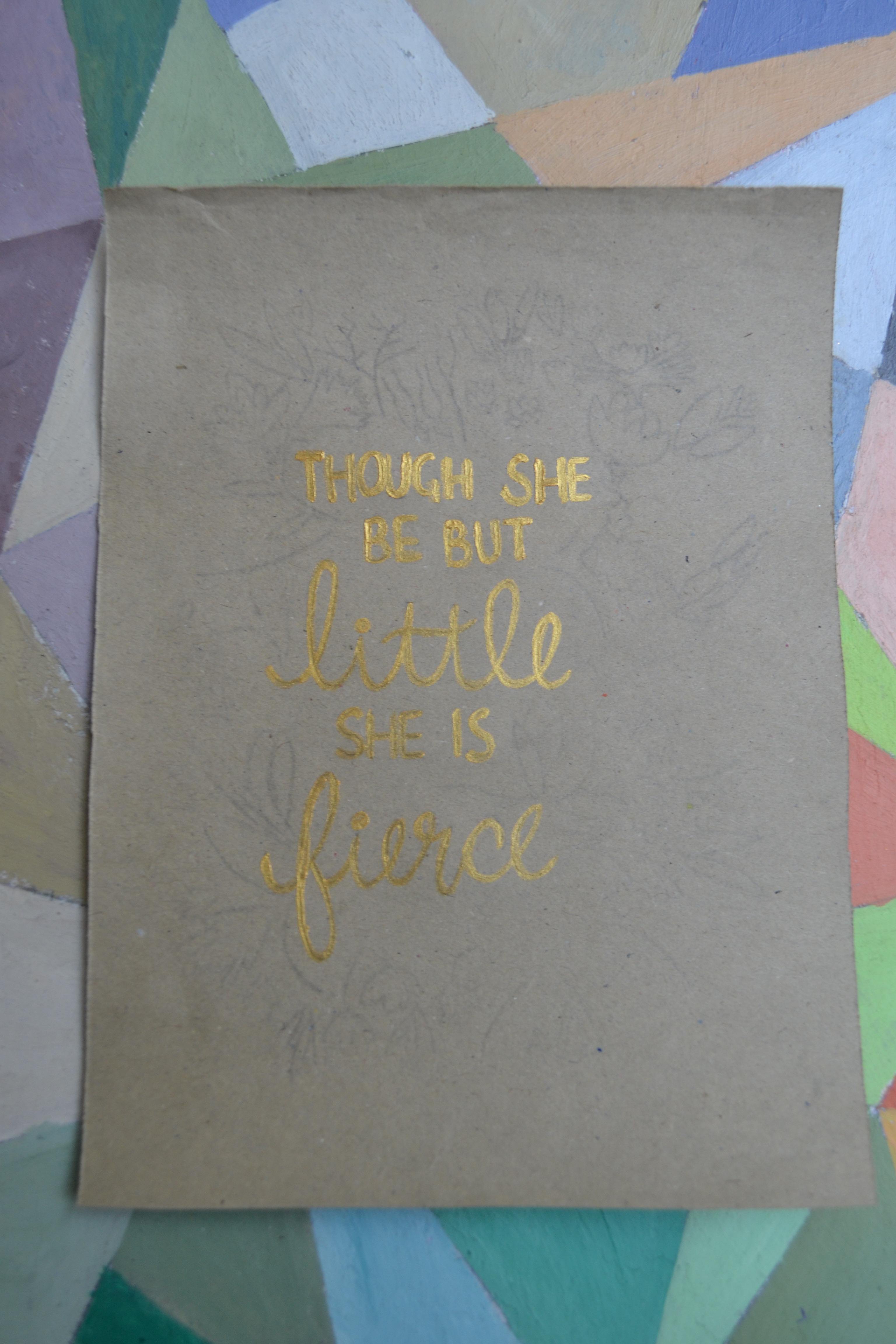
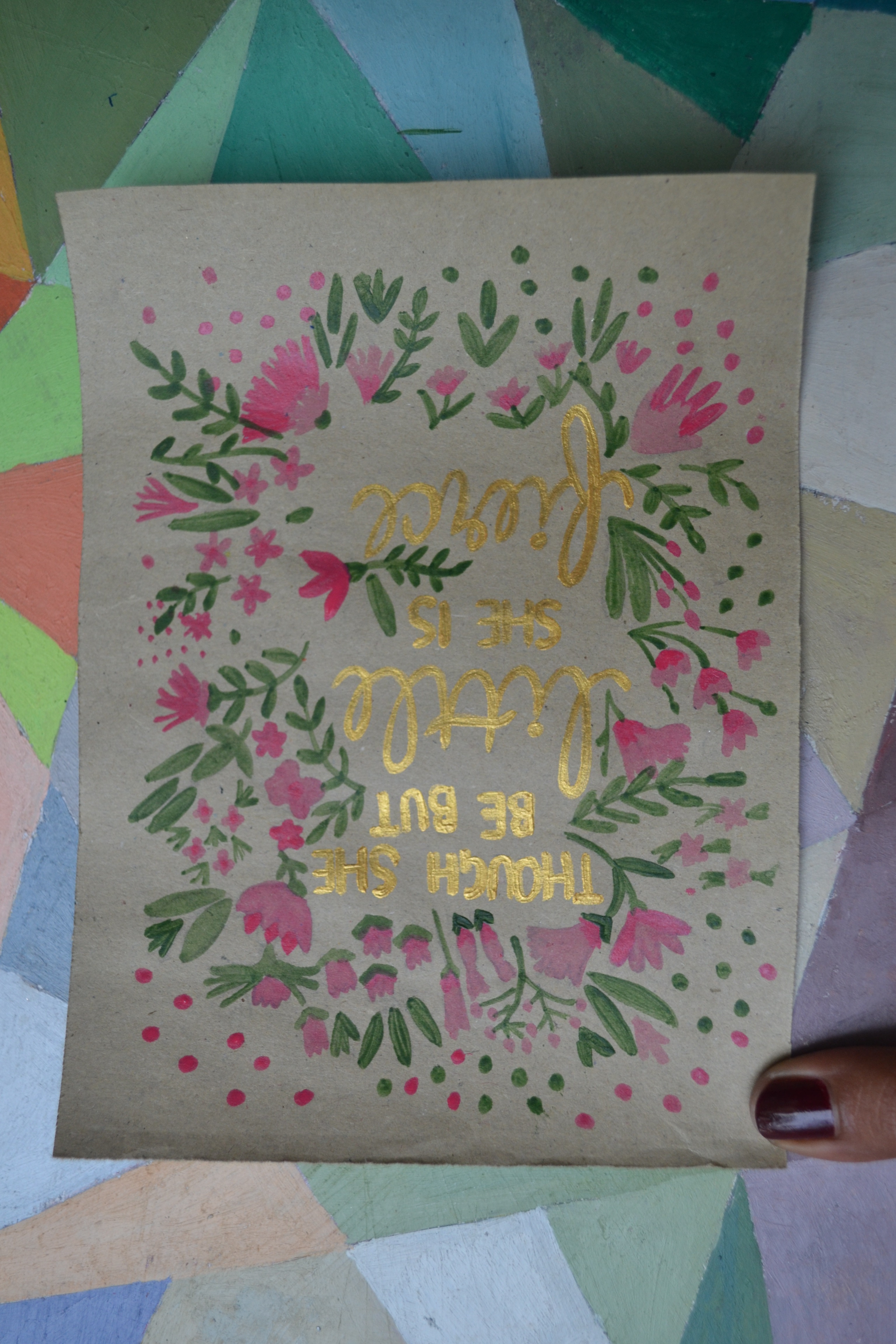
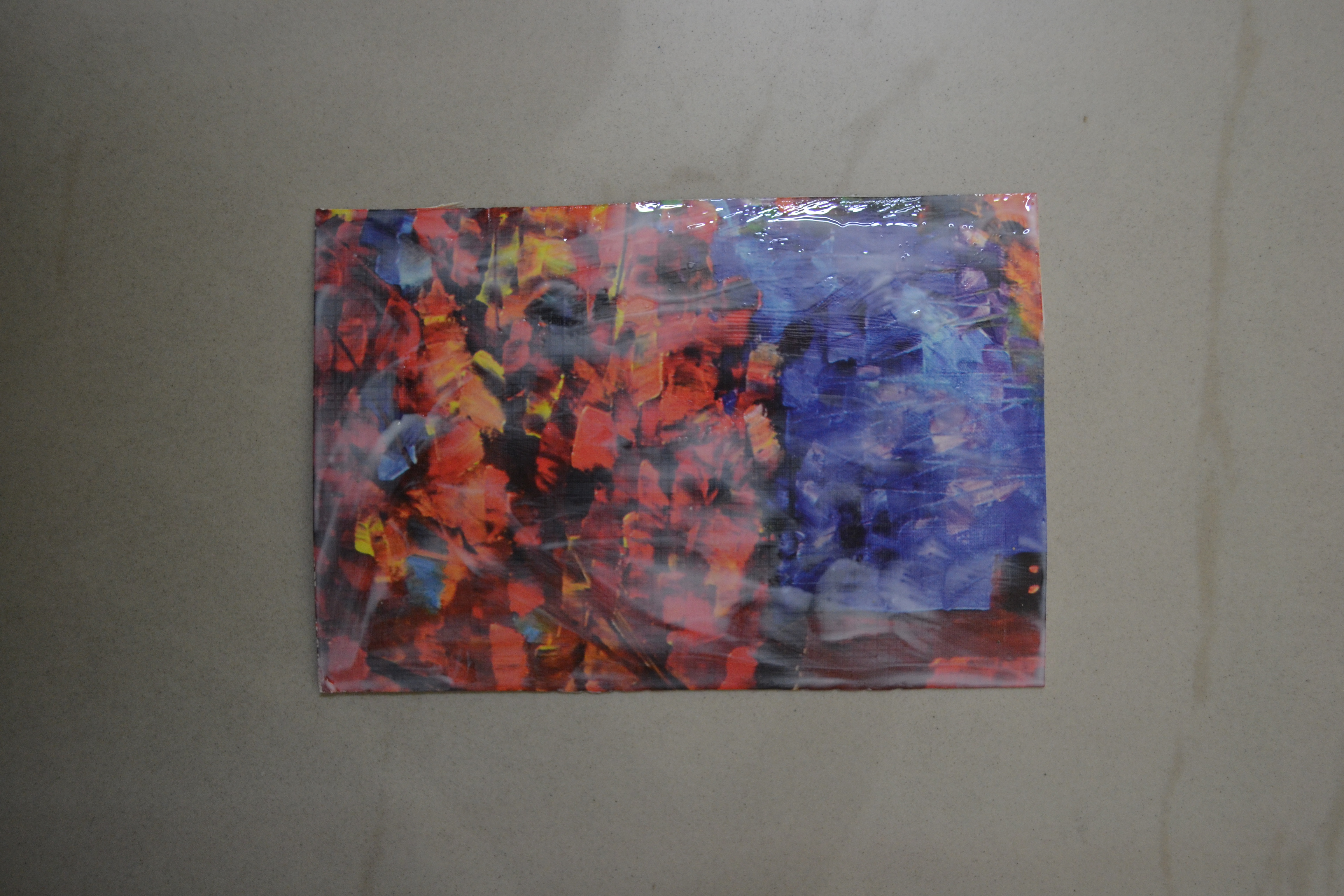
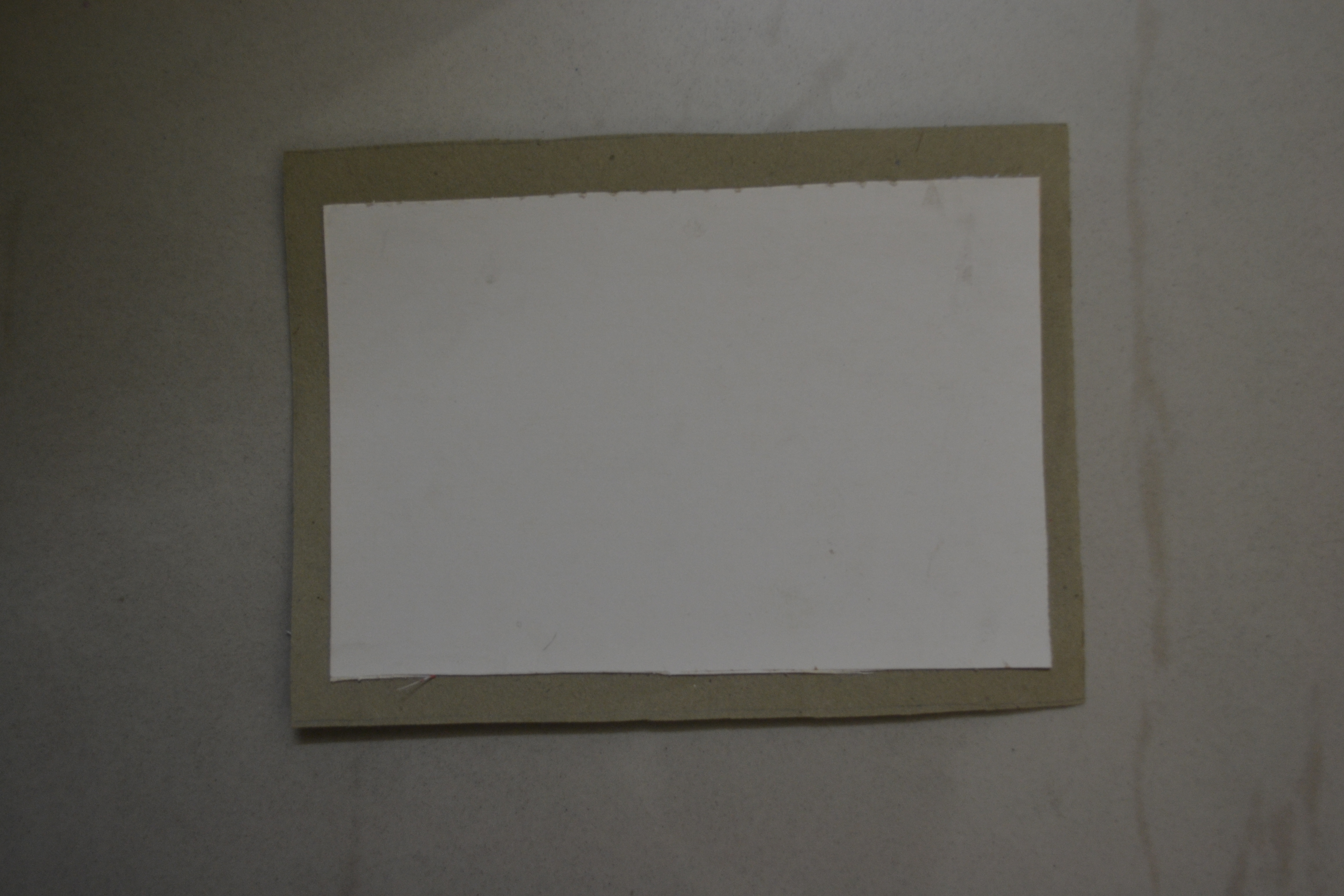
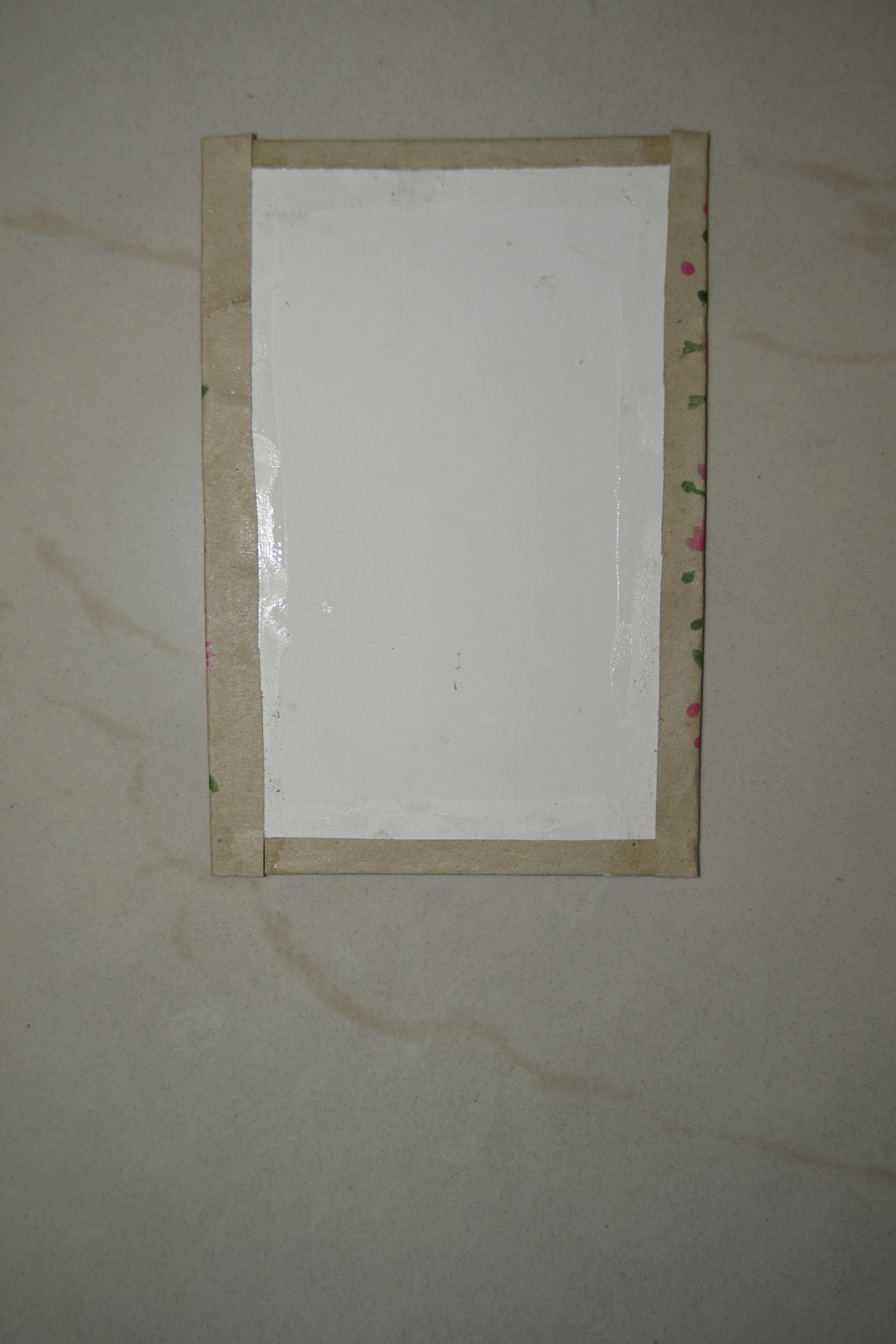
I will not go into an in-depth review of this step, as it is up to you what you want the cover to be.
For mine, I faintly traced on a quote I found on the internet. I did the font with some gold paint, and the surrounded flower with watered down acrylic paints to give it a water-colored look.
I then stuck on the painted paper onto some thin cardboard (that I took from the cover of an old sketch pad). Also, instead of cutting off the excess paper, I folded it over to the inside and stuck it on.
Finish It Off
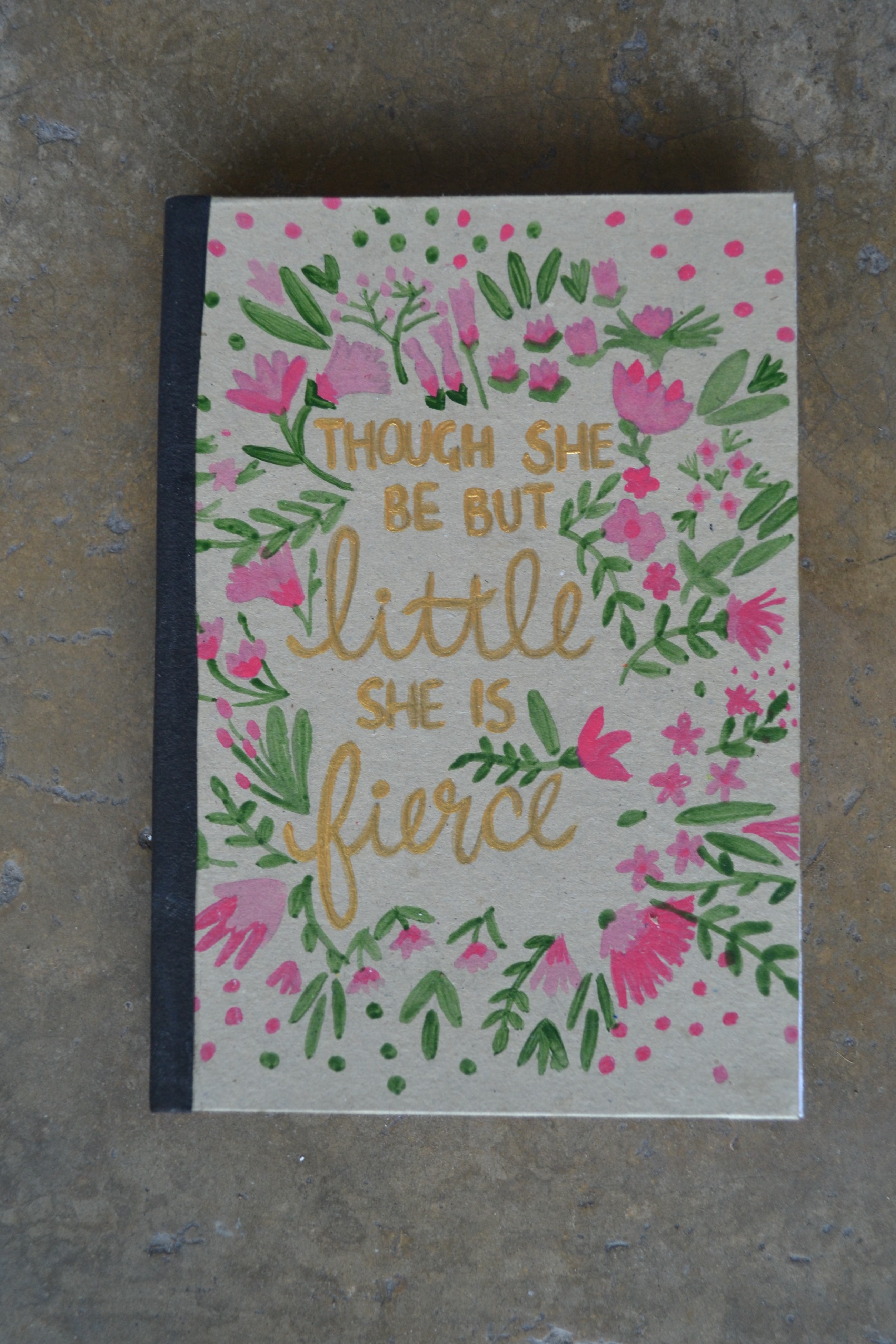
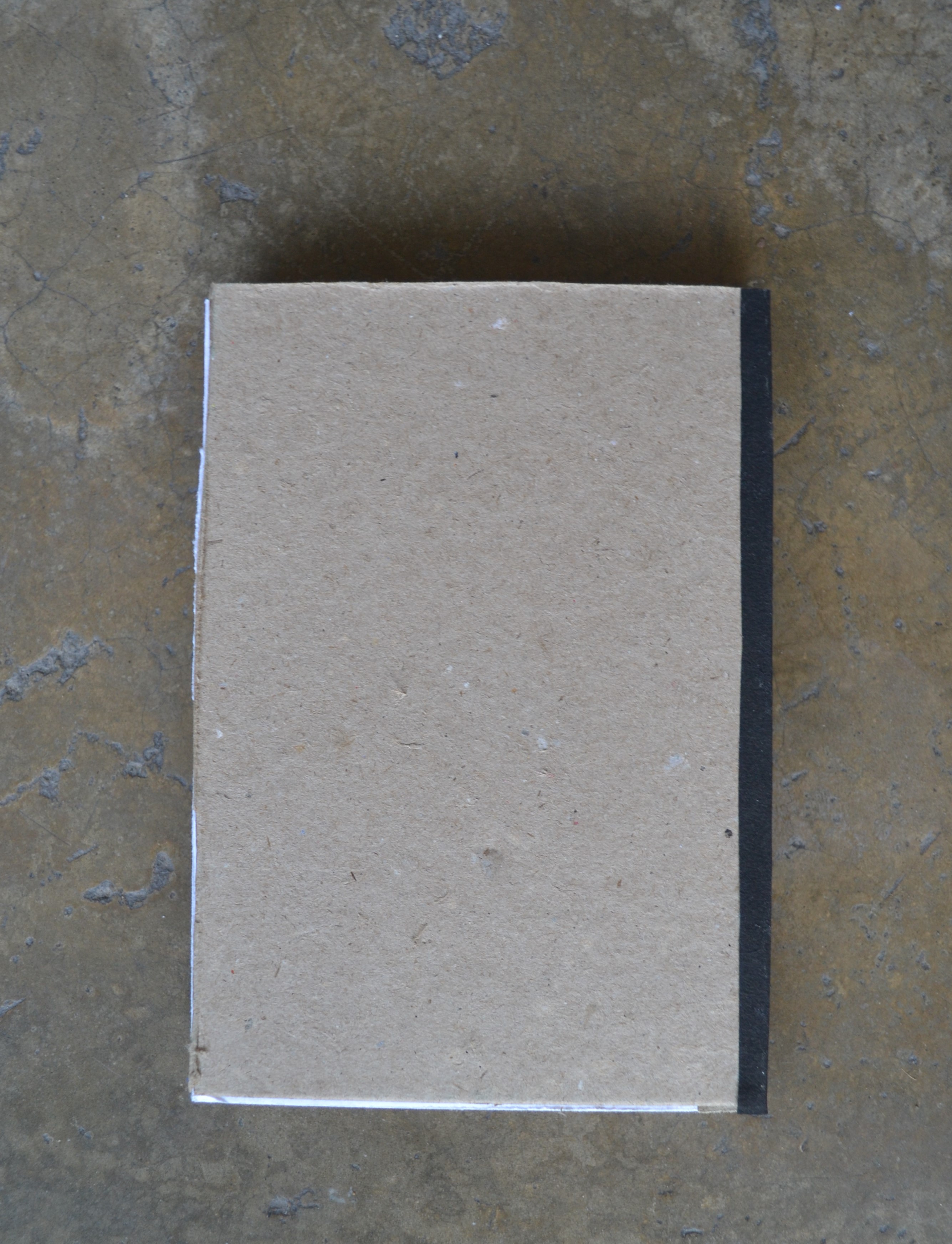
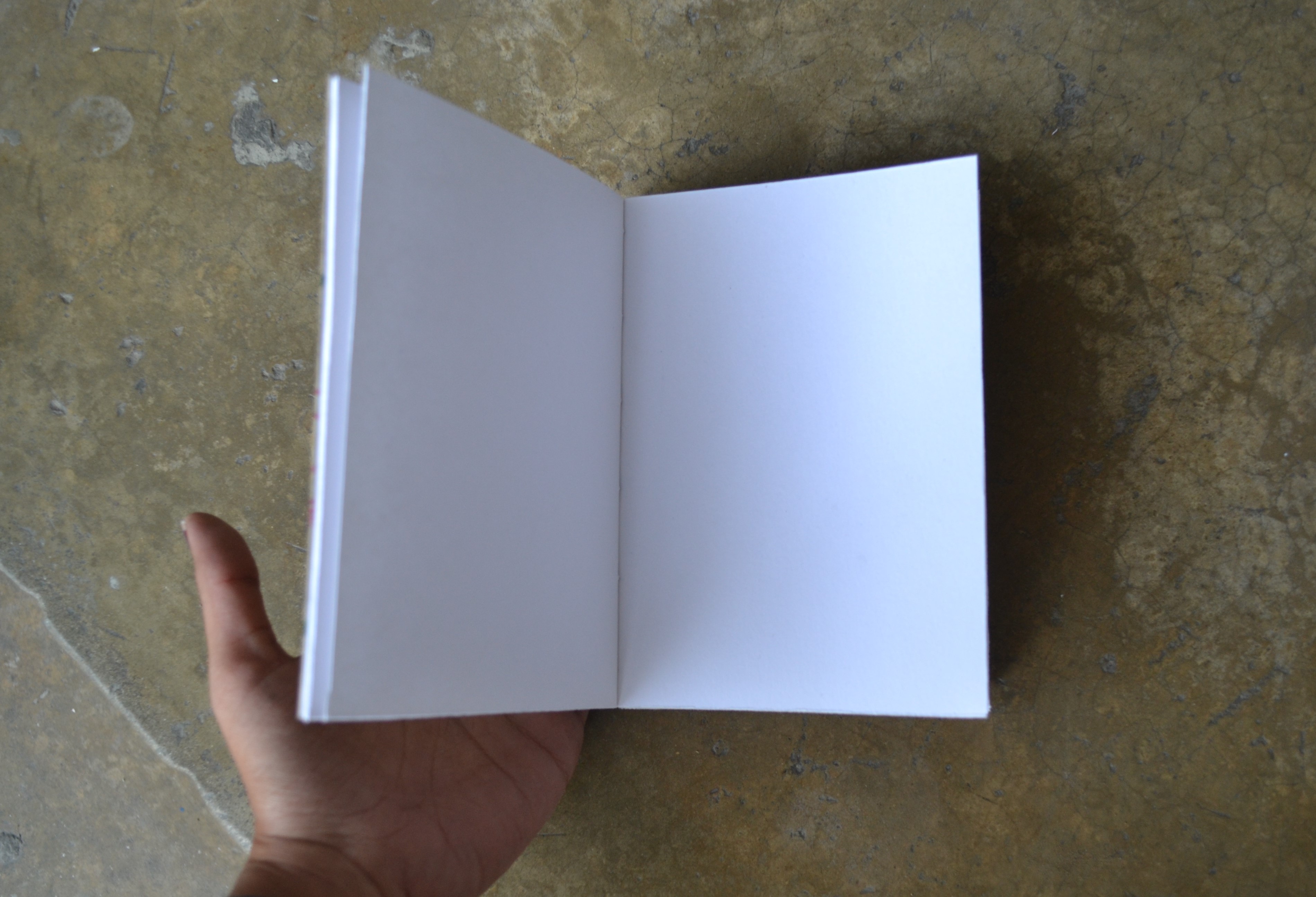
Now stick the front cover onto the first page of the book, and the hard cardboard on the back of it.
To give it a cleaner look, I added a spine of black paper over the spine.
Here are photos of how the final notebook looks from the front, the back and when open.
We Are Done
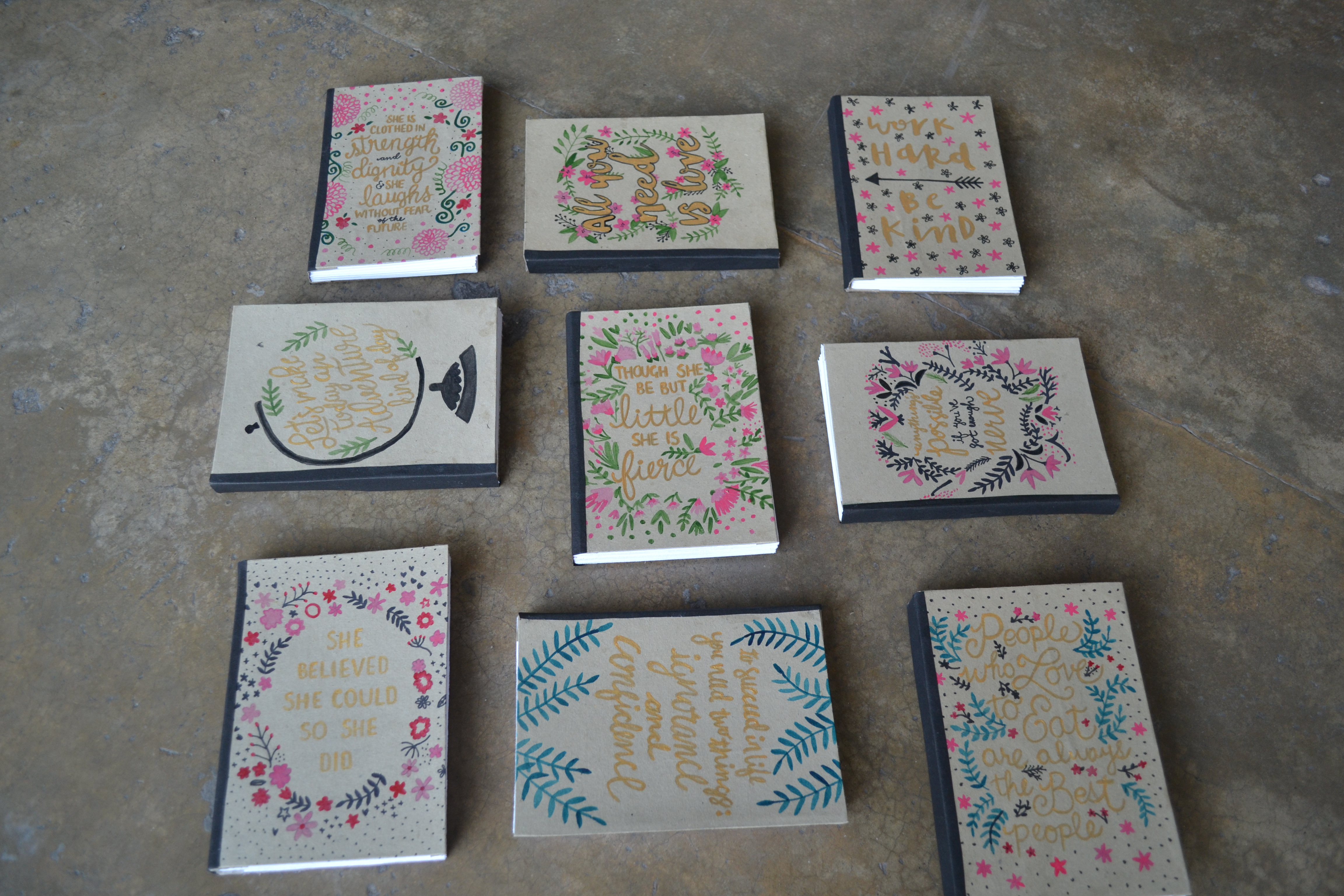
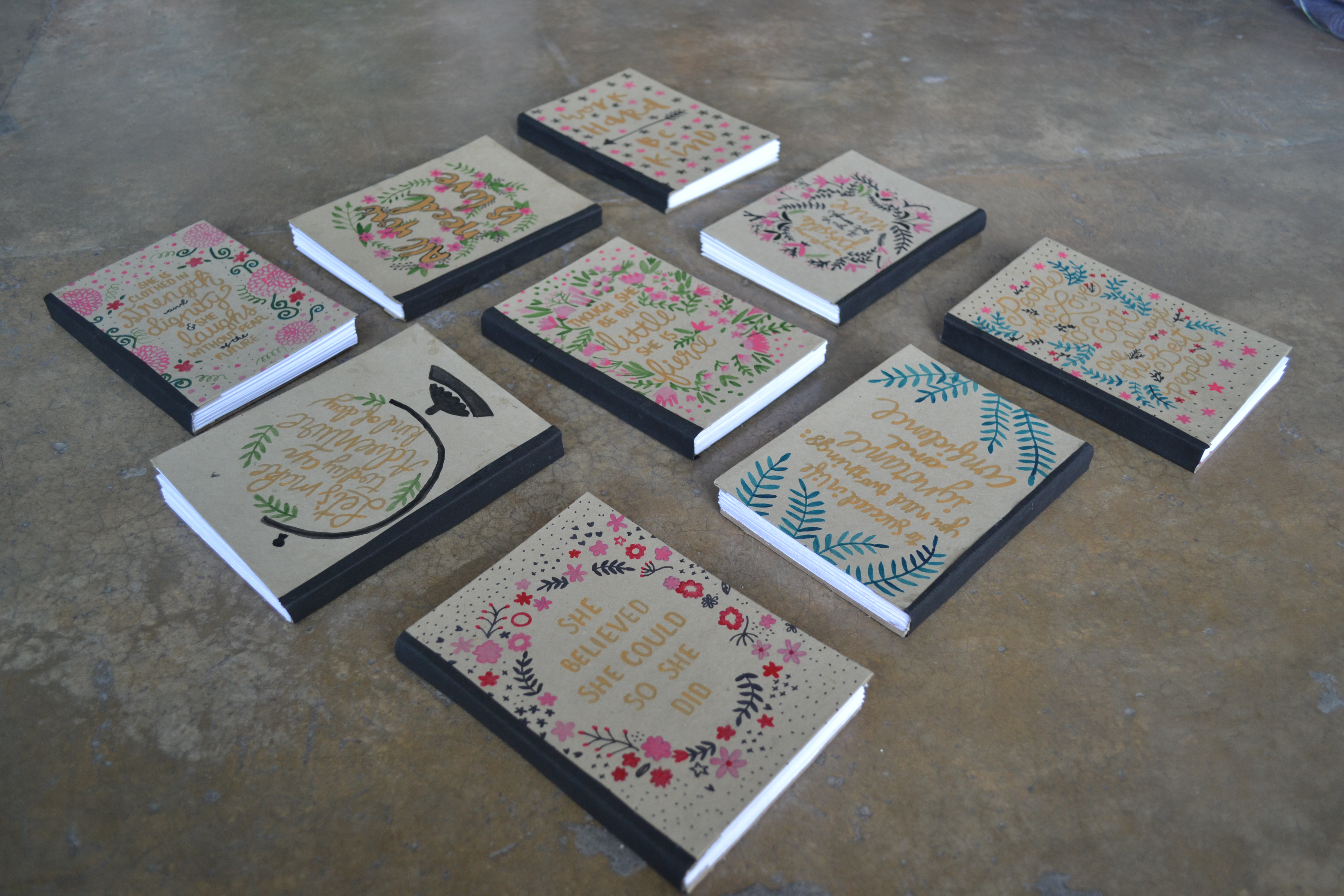
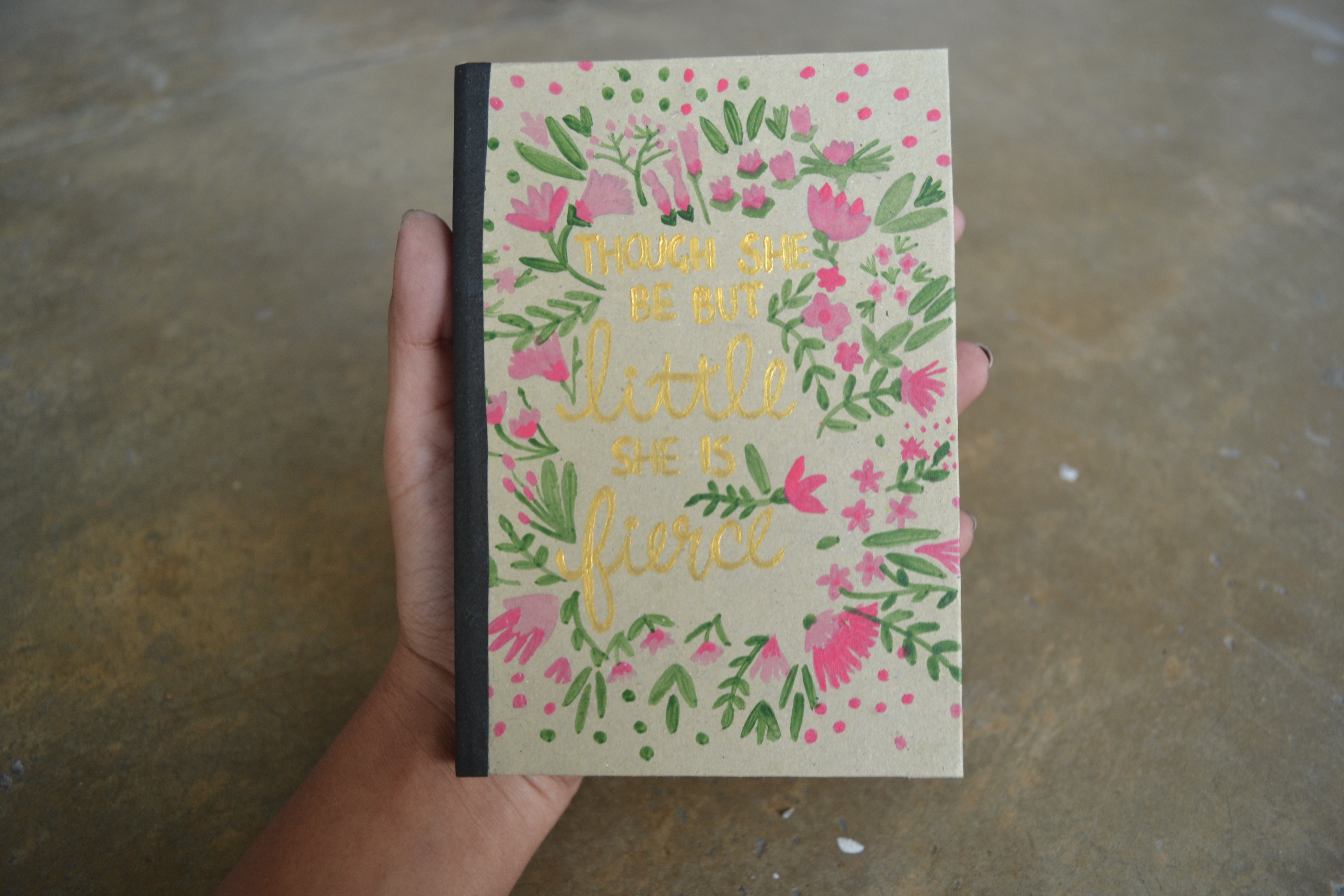
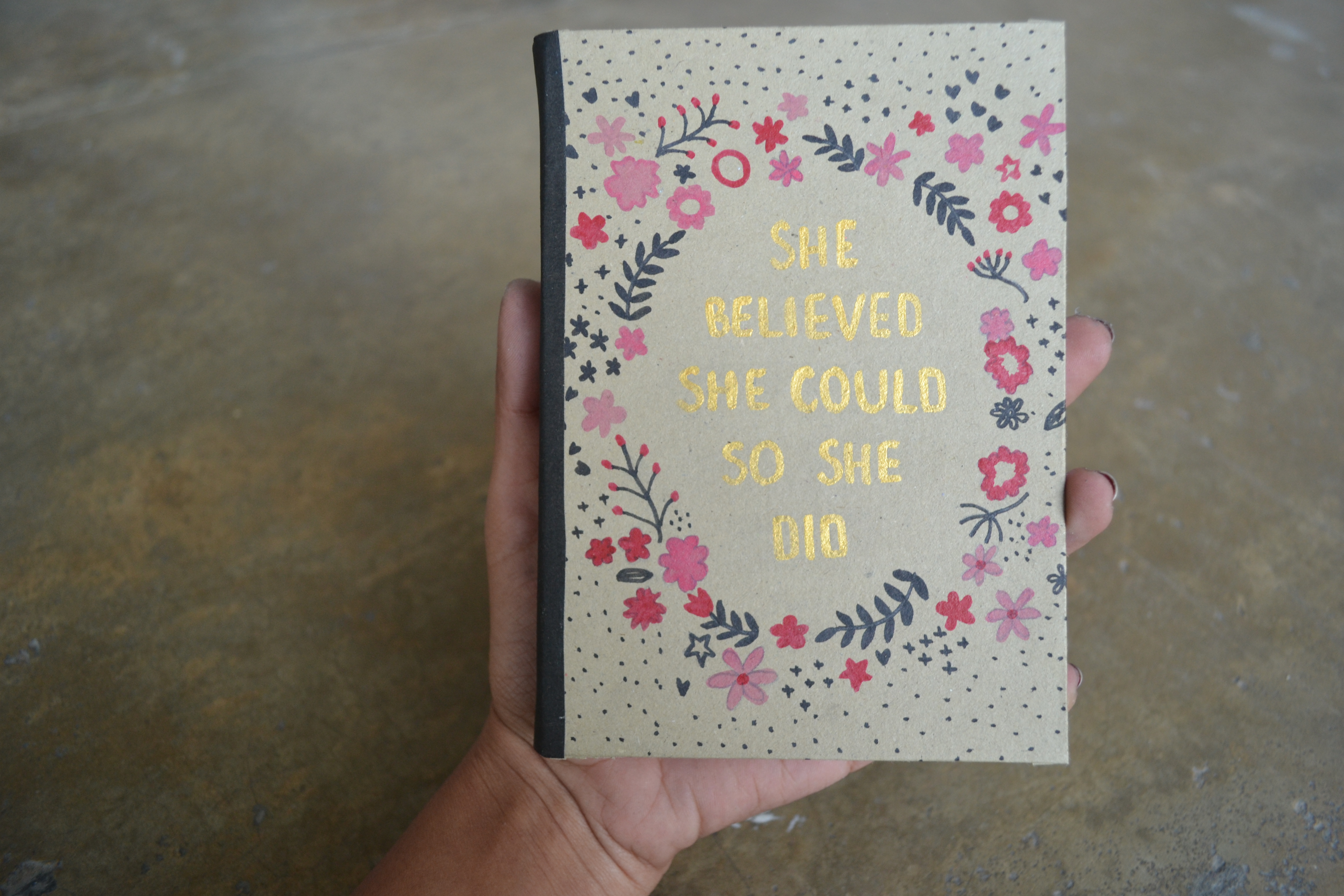
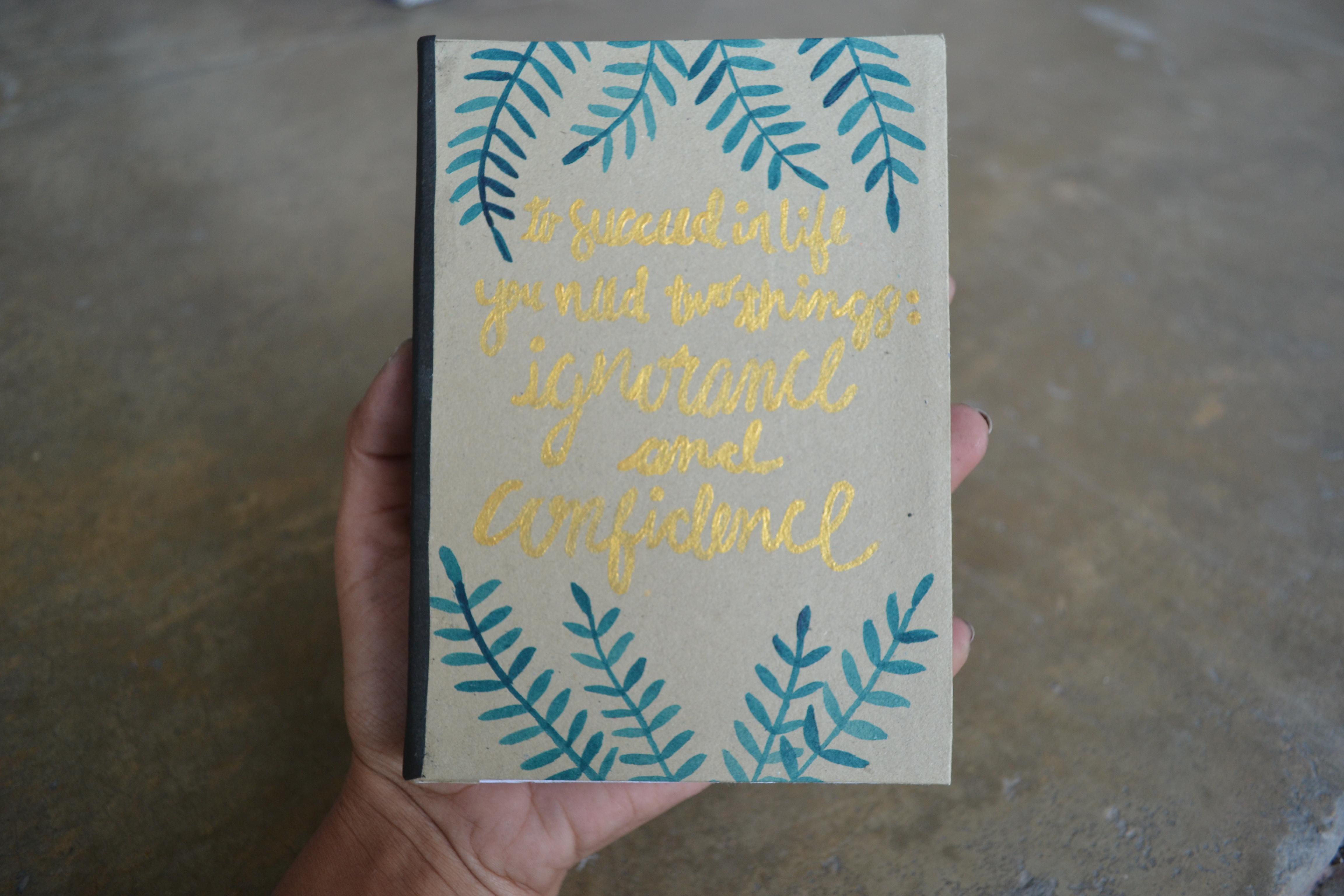
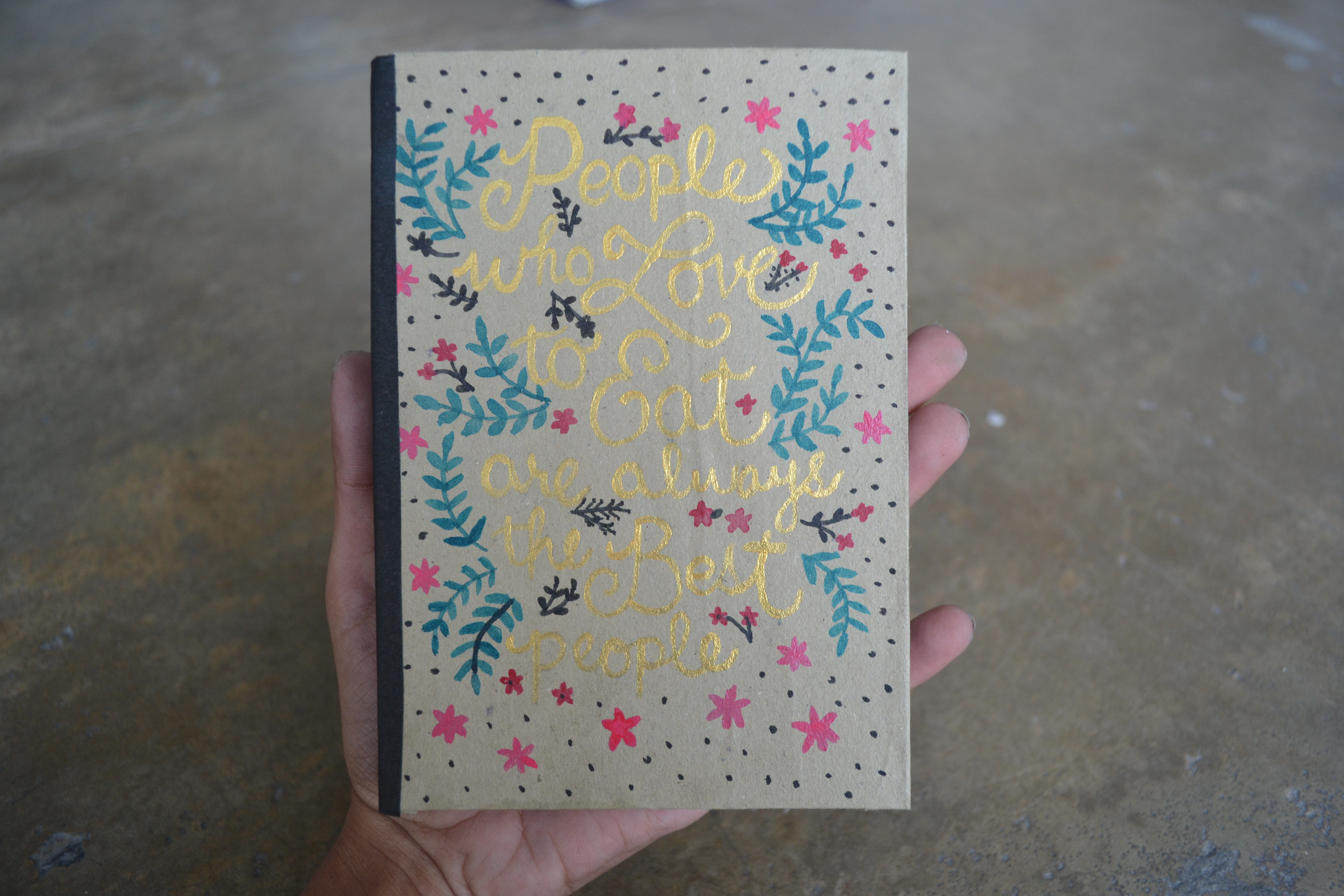
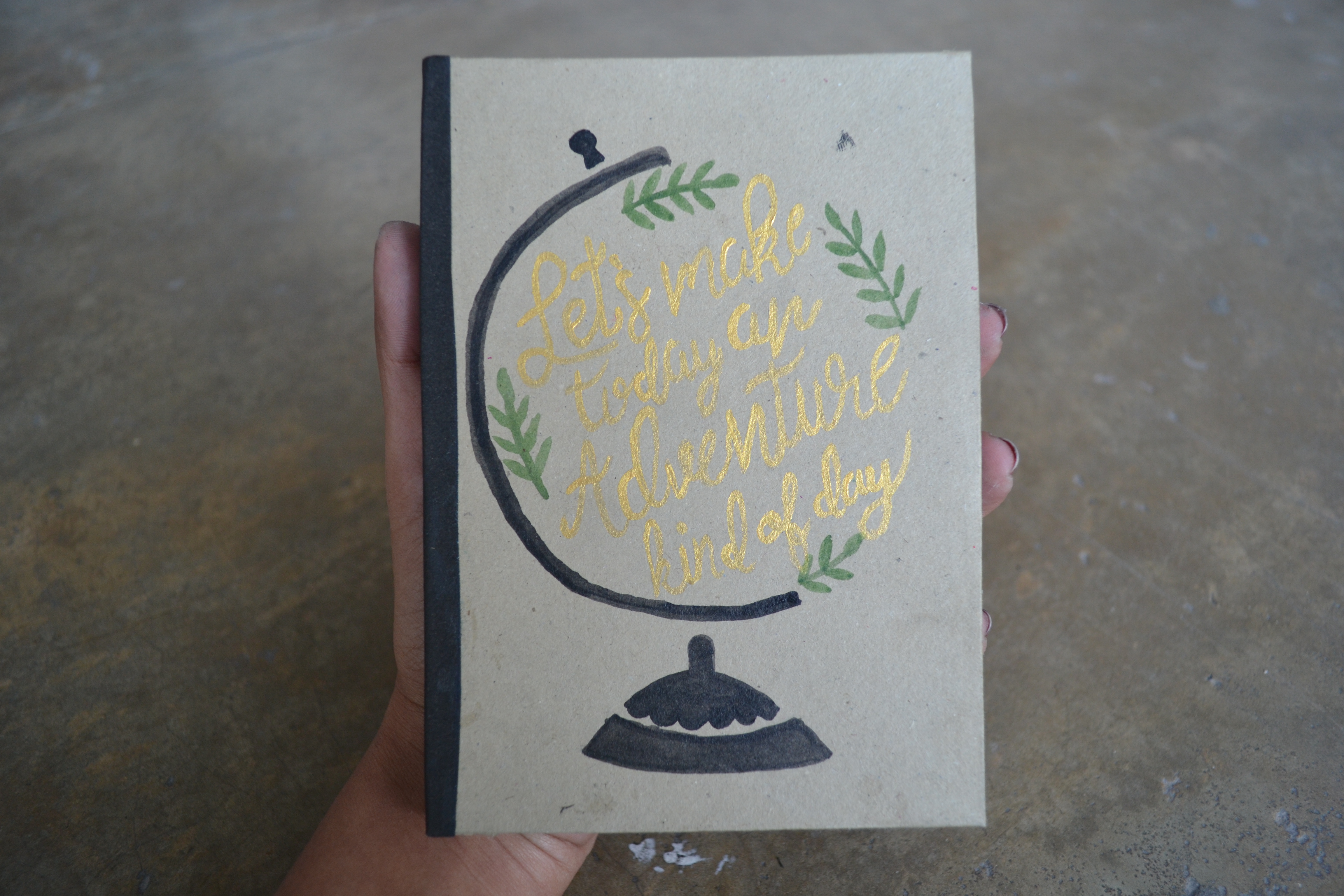
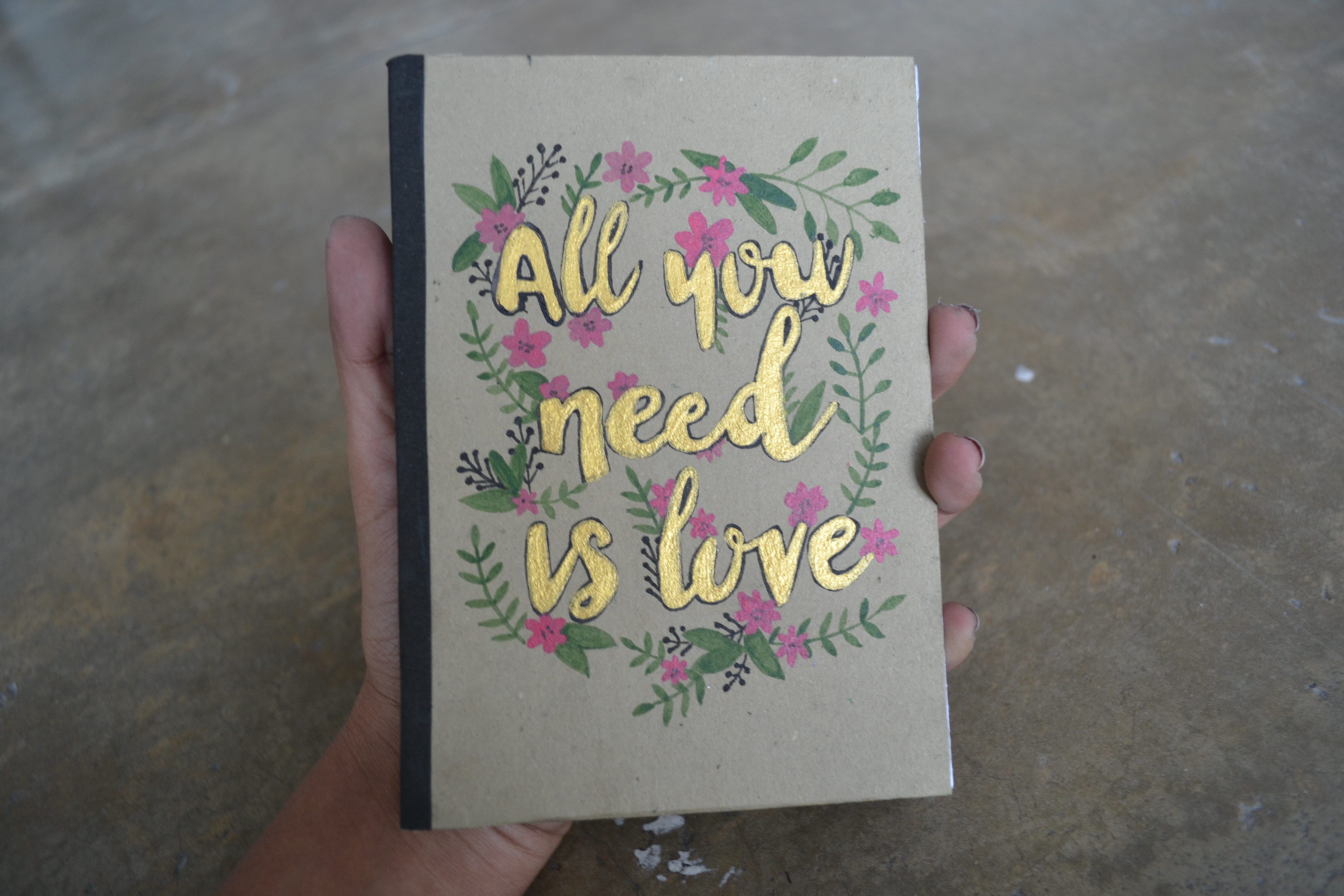
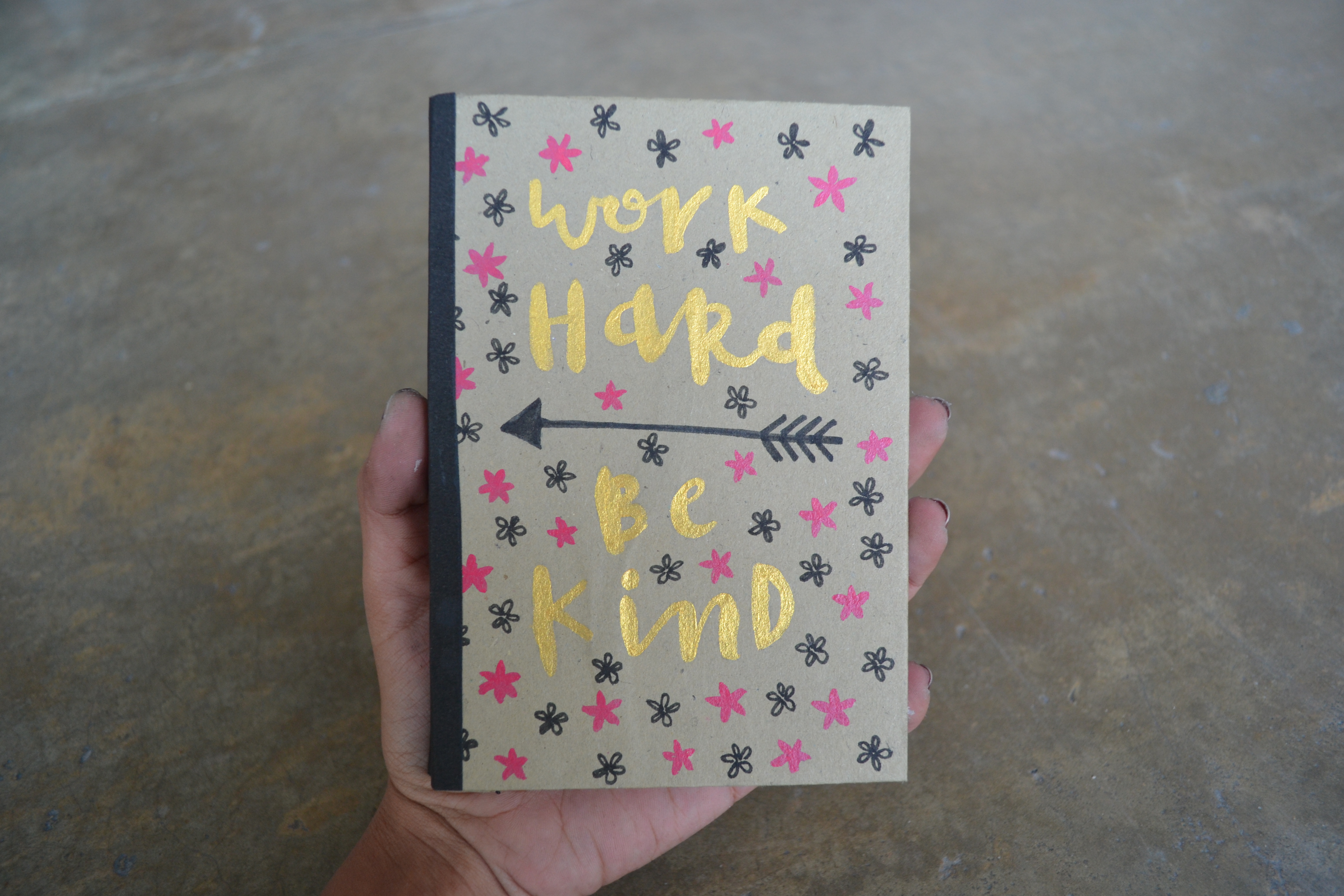
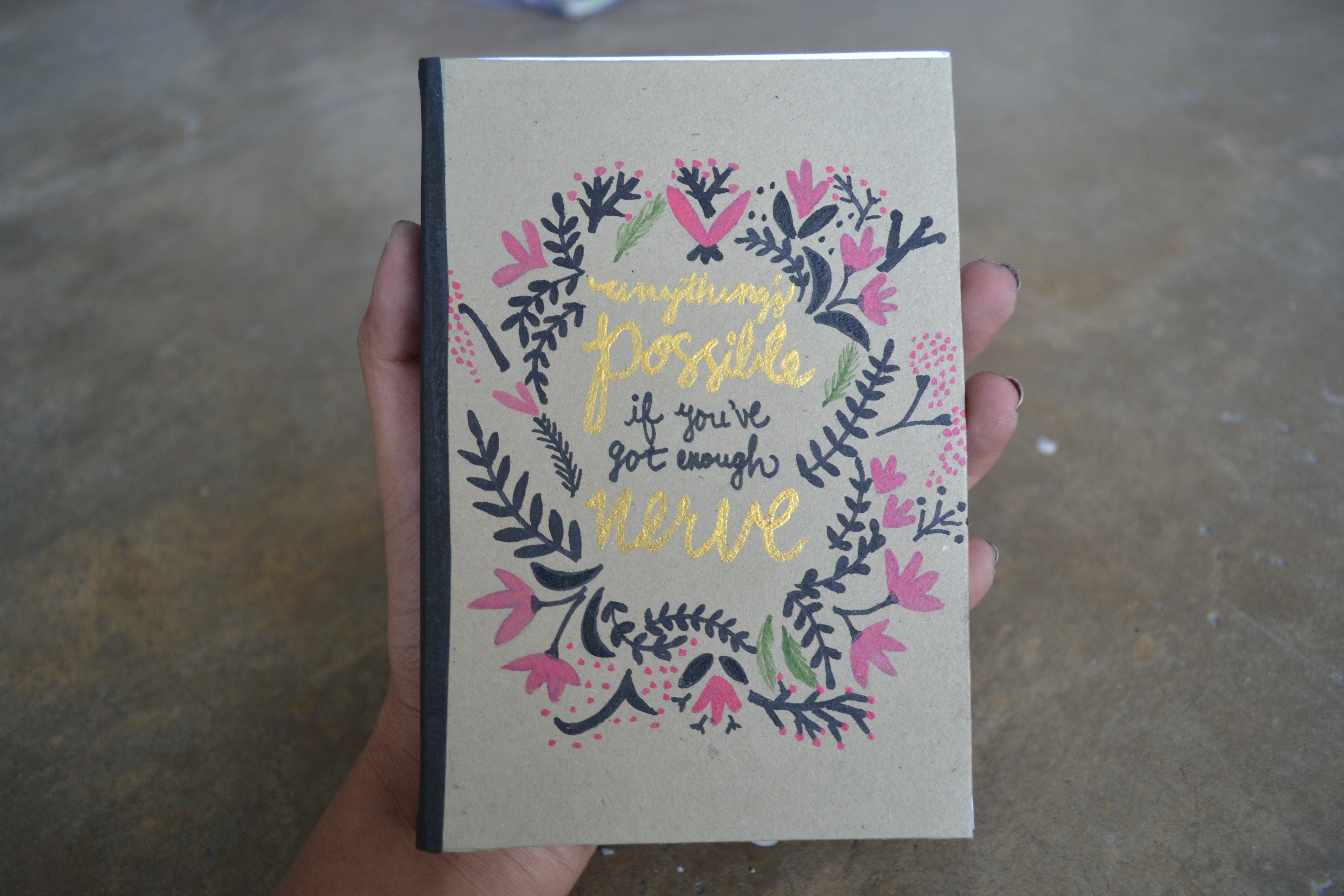
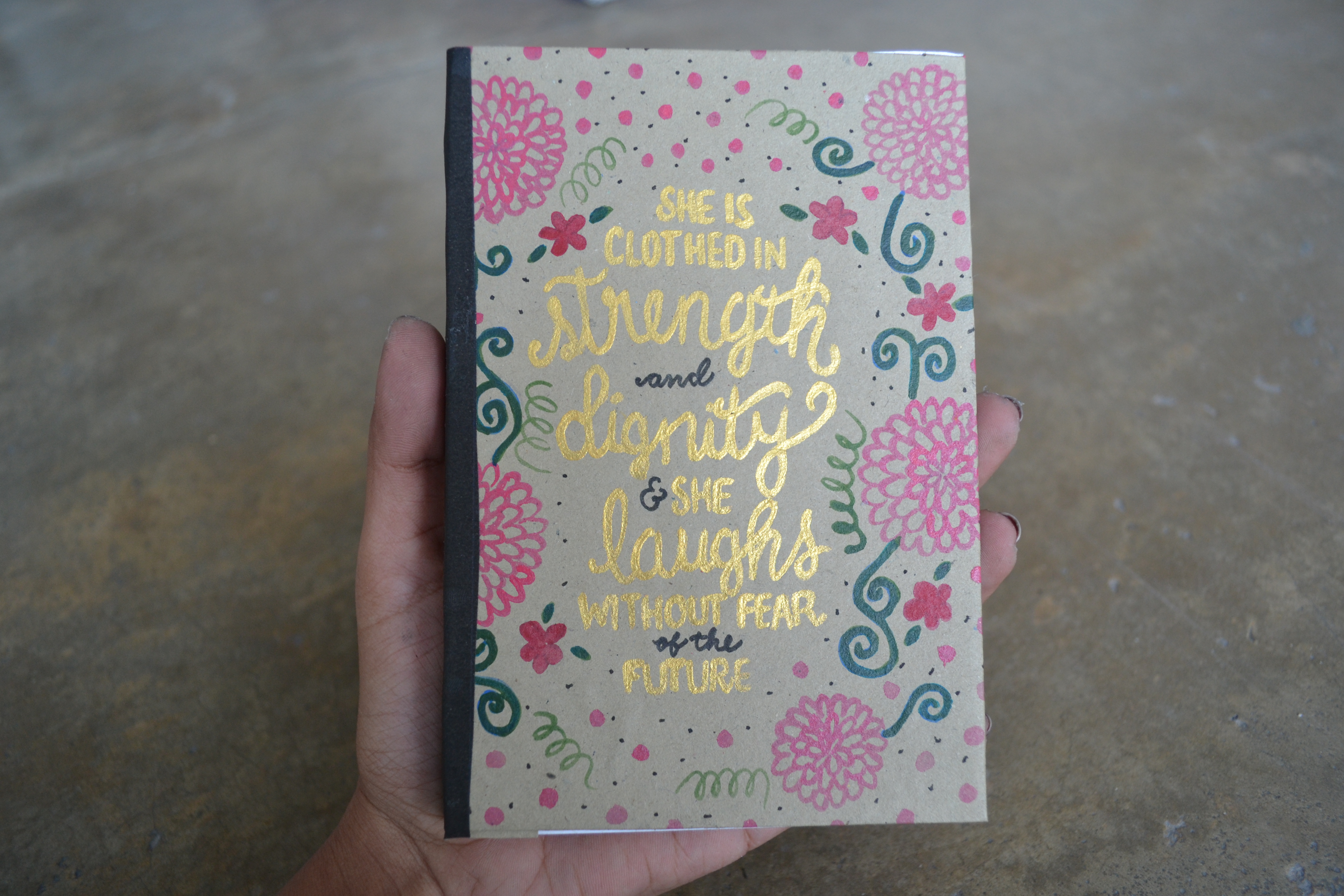
Here is me trying to take some artsy shots of my work. I made a total of 9 notebooks, all of which followed a certain color scheme.
I took all the cover images from the internet, which I drew out and then hand painted.
I hope you enjoyed my instructable, and my instructions were clear and understandable.
If you liked this projects, please check out my blog.
Happy Crafting!